- Absolutely loaded with standard equipment
- Appreciably larger and more practical than the last Kona
- Funky design throughout
- Infuriating safety noises that are difficult to switch off
- Ride is a touch firm
- Interior should feel more special
We recently tested the second-generation Hyundai Kona and came off impressed with its size growth for added practicality, its flashy new interior, long standard equipment list and styling that’s more mature but – importantly for a Kona – still edgy and funky. For a sizeable $7,500 premium – pun intended – over the base model Kona is the 2023 Hyundai Kona Premium, which adds a boatload of standard equipment for a more luxurious feel and even more standard technology. Is it the model to buy? Let’s find out.
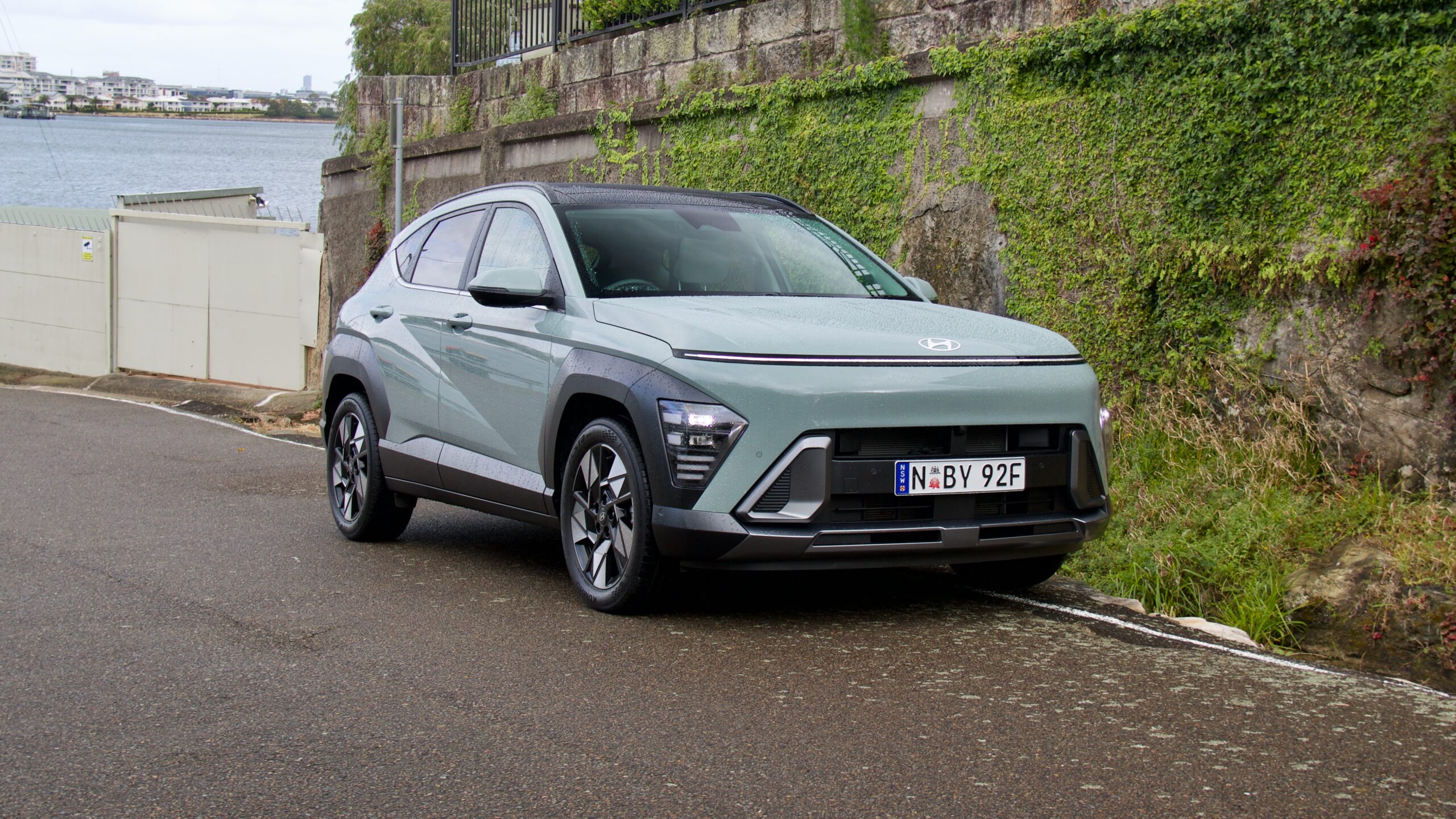
Competing in the ever-popular small SUV segment, the 2023 Hyundai Kona Premium offers tough competition to a number of vehicles, including the Volkswagen T-Roc, Skoda Kamiq, Subaru Crosstrek, Nissan Qashqai, Haval Jolion, Chery Omoda 5 and Toyota Corolla Cross. Why buy the Kona?
How much does the 2023 Hyundai Kona Premium cost to buy?
While the entry-level Kona is priced from $32,000 plus on-road costs, the upper-spec Premium tested here is priced from $39,500 +ORC – a $7,500 price bump – or around $44,000 drive away, depending on location.
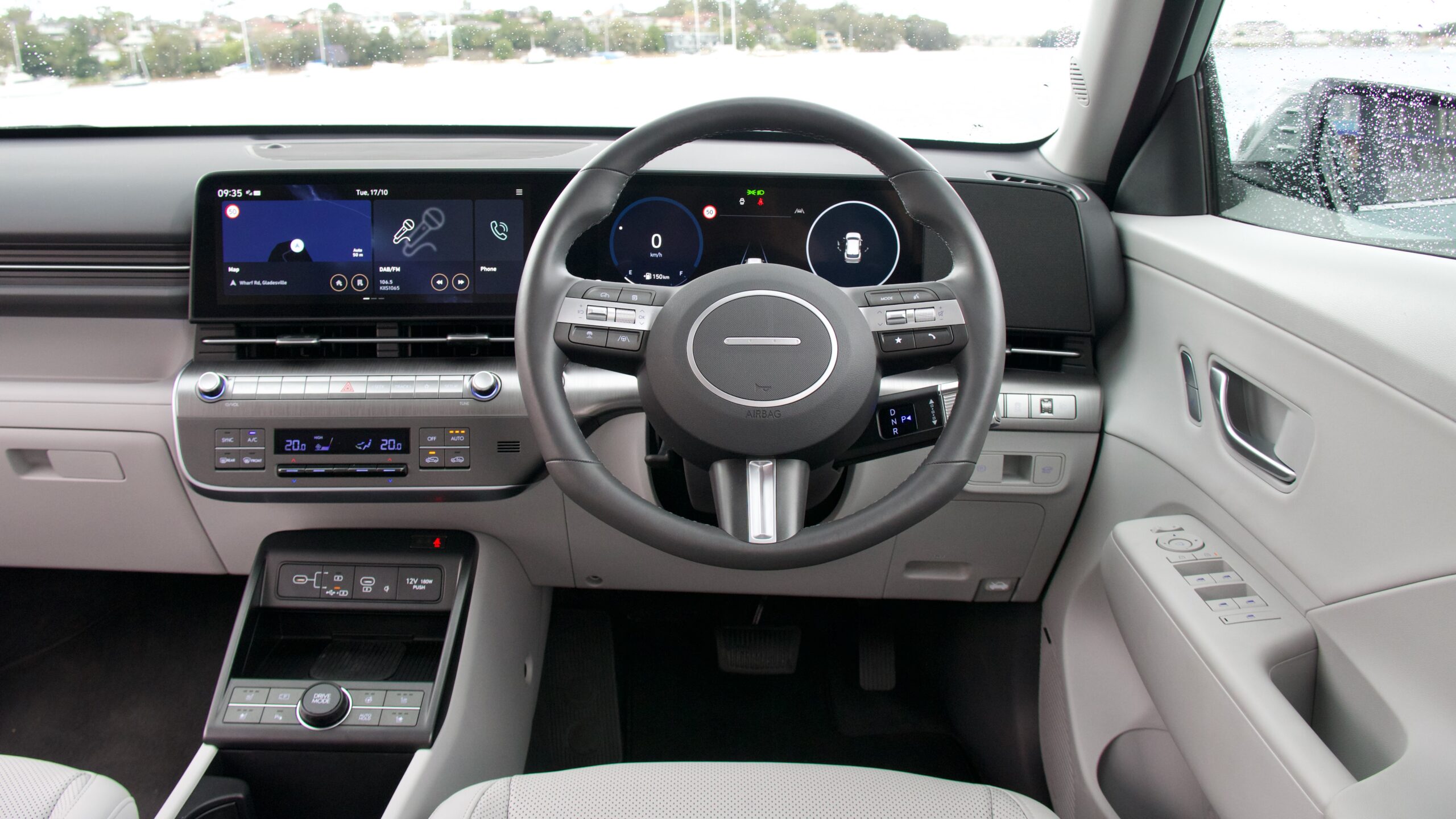
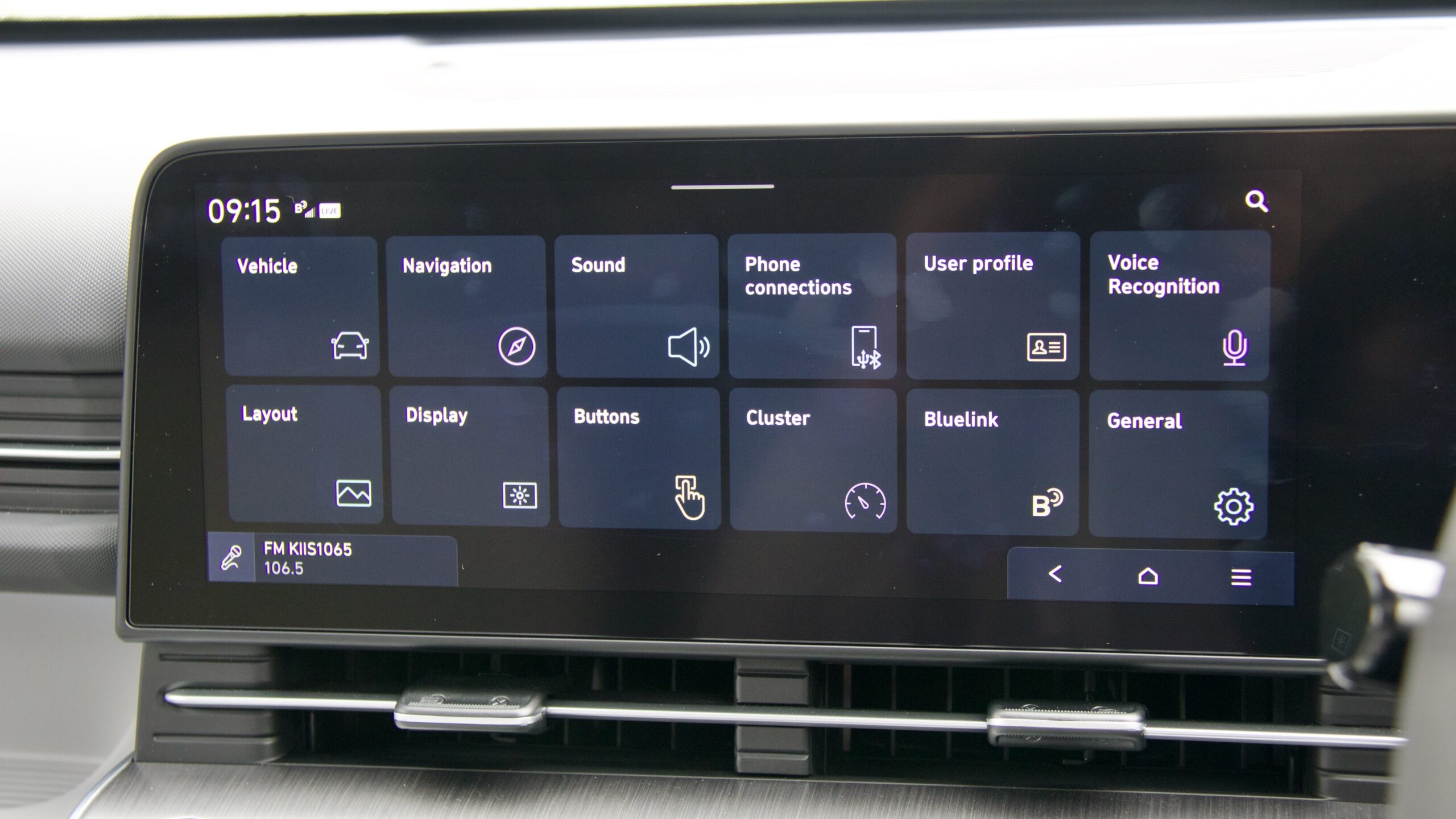
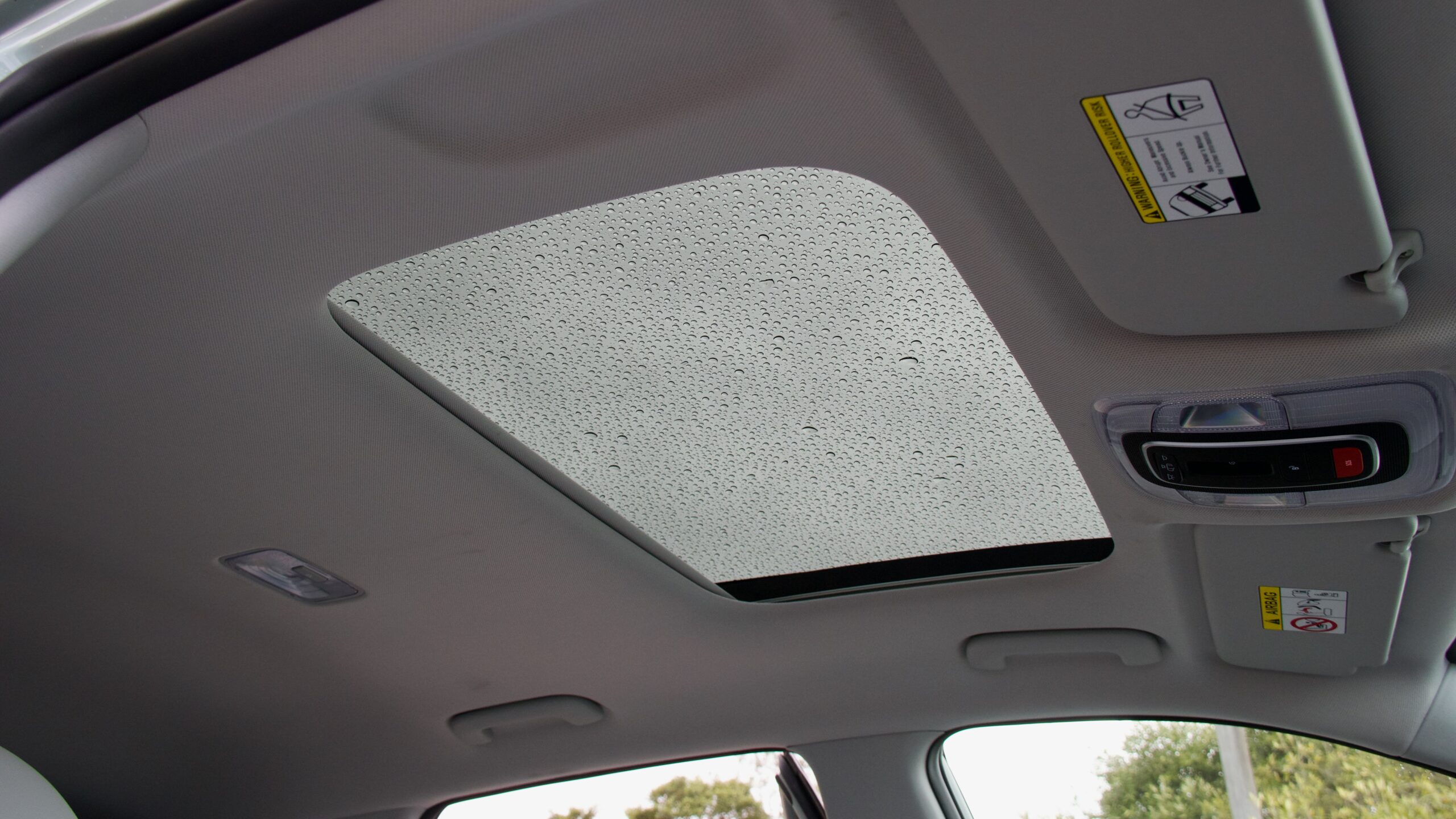
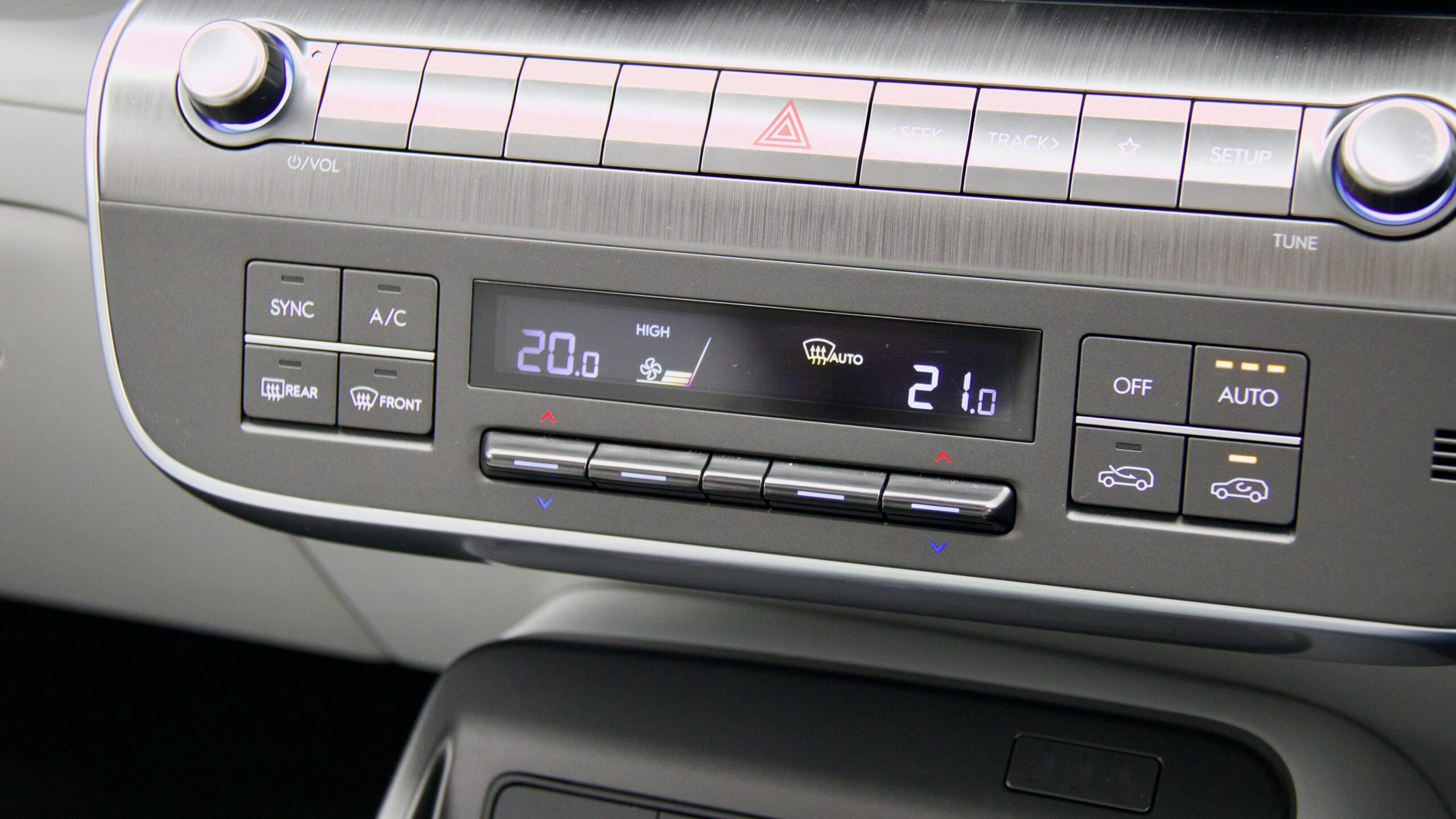
Kona Premium standard equipment:
- 18-inch alloy wheels
- Dusk-sensing automatic all-LED exterior lighting
- Automatic wipers
- Roof rails
- Keyless entry with push button start
- Remote start and remote smart parking functionality
- Rear privacy glass
- Hands-free electric tailgate
- Heated and electric-folding mirrors that drop automatically in reverse
- Dual-zone climate control with rear vents
- Leather upholstery
- Heated leather steering wheel with paddle shifters
- 10-way electric driver/8-way front passenger seats with ‘relaxation’ mode and driver’s memory functionality
- Heated and ventilated front seats
- Heated outboard rear seats
- 12.3-inch digital driver’s display
- 12.3-inch touchscreen with live services
- Satellite navigation with live traffic
- Wired Apple CarPlay and Android Auto
- AM/FM/DAB+ digital radio
- Eight-speaker Bose sound system
- Wireless phone charger
- 4x USB-C charging ports
- Auto-dimming rear mirror
- Customisable LED ambient cabin lighting

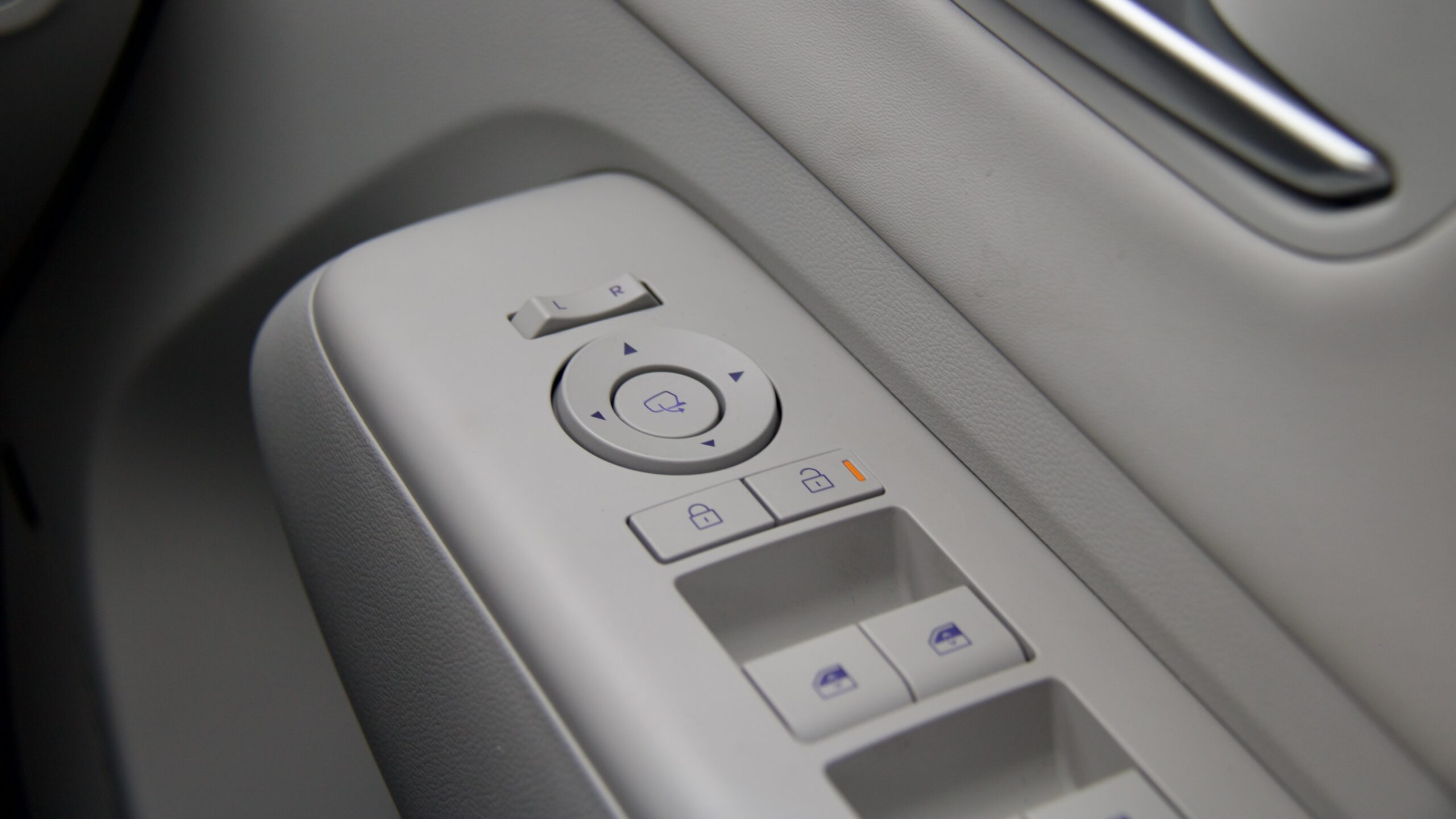
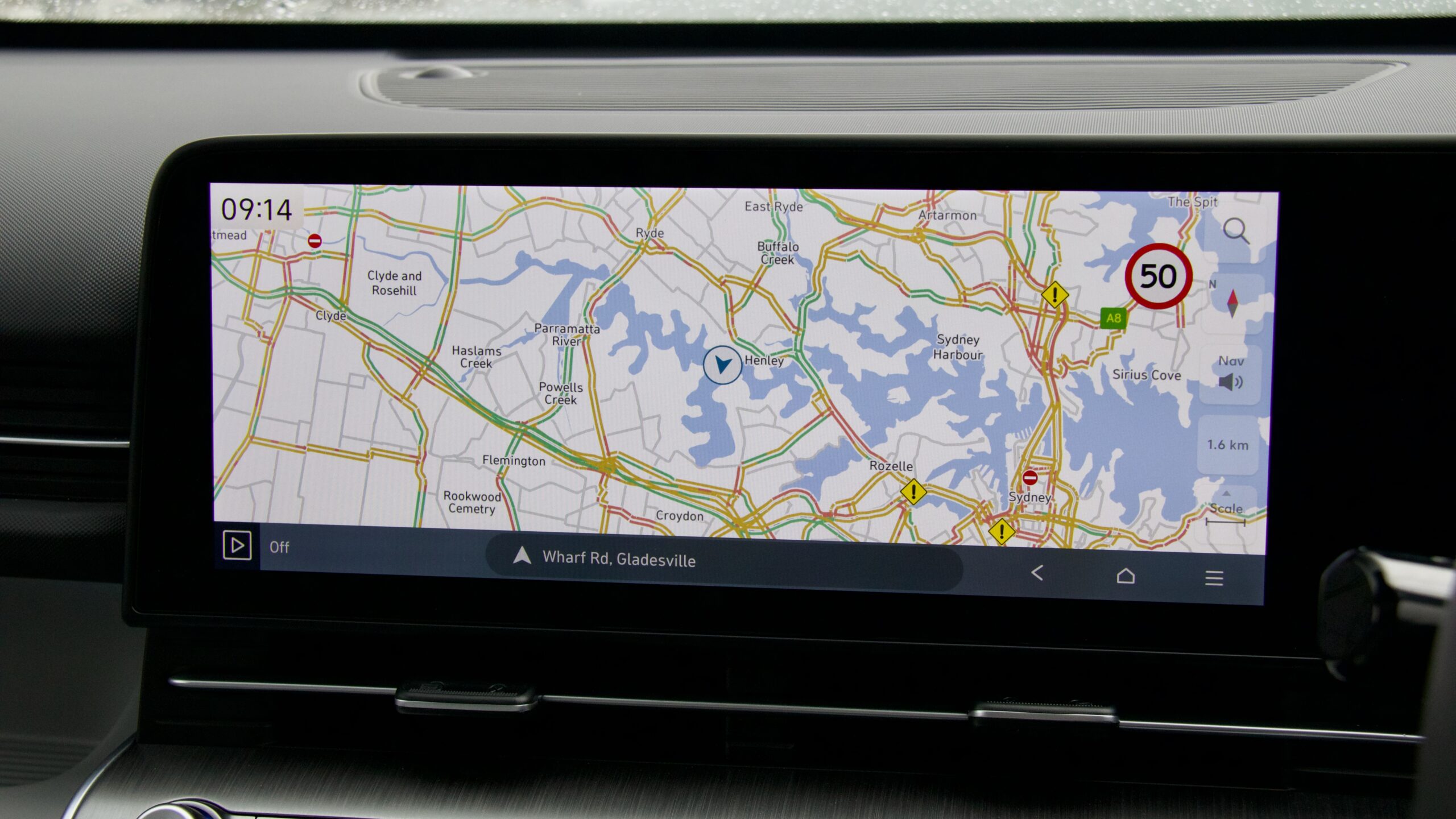
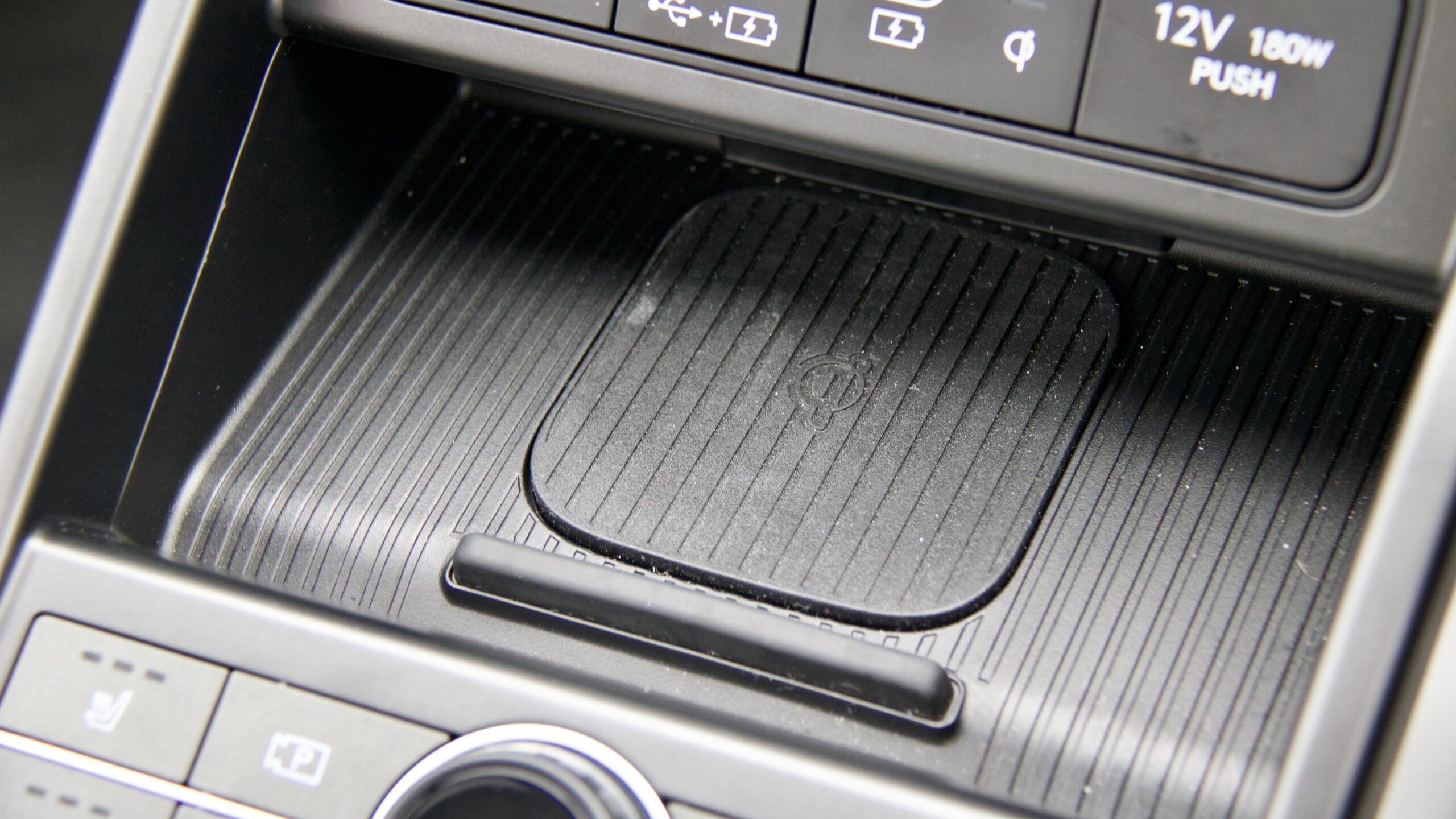
The 2023 Hyundai Kona range is yet to be tested by ANCAP, but recently received a four-star Euro NCAP rating with scores of 80 per cent for adult occupancy protection, 83 per cent for child occupancy protection, 64 per cent for vulnerable road user protection and 60 per cent for safety assist.
Kona Premium safety equipment:
- Seven airbags (2x front, side and curtain with a front centre unit)
- Auto emergency braking (AEB) with pedestrian, cyclist and intersection assistance
- Low-speed automatic rear braking
- Lane keep assist with lane departure warning
- Lane trace assist
- Adaptive cruise control with stop and go functionality
- Safe exit assist
- Blind-spot monitoring with rear cross-traffic alert (both with braking)
- Blind-spot camera
- Auto high beam
- Traffic sign recognition with warnings for speeding
- Driver attention monitoring
- 360-degree camera
- Front and rear parking sensors
- Burglar alarm
- Tyre pressure monitoring
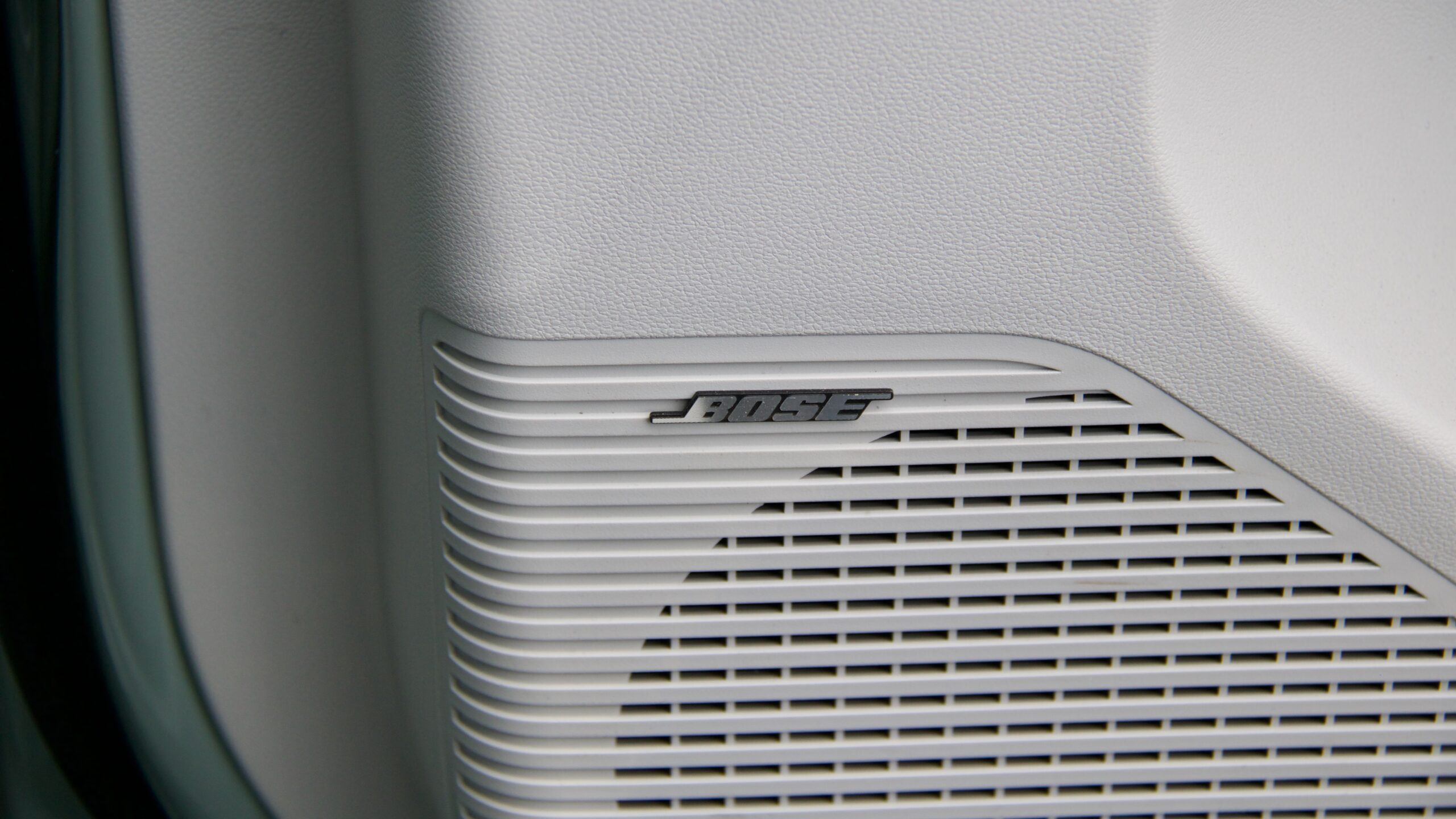
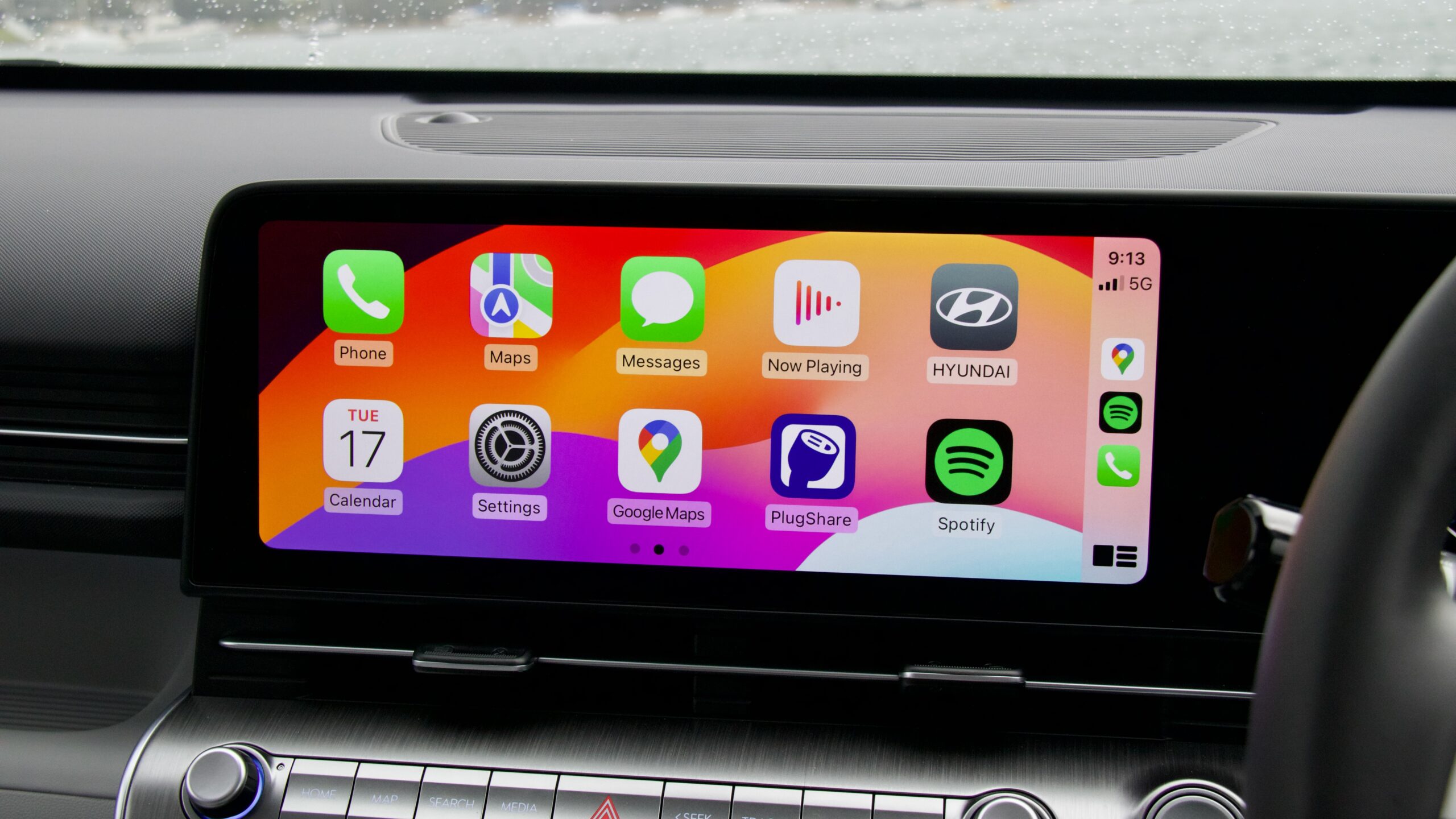
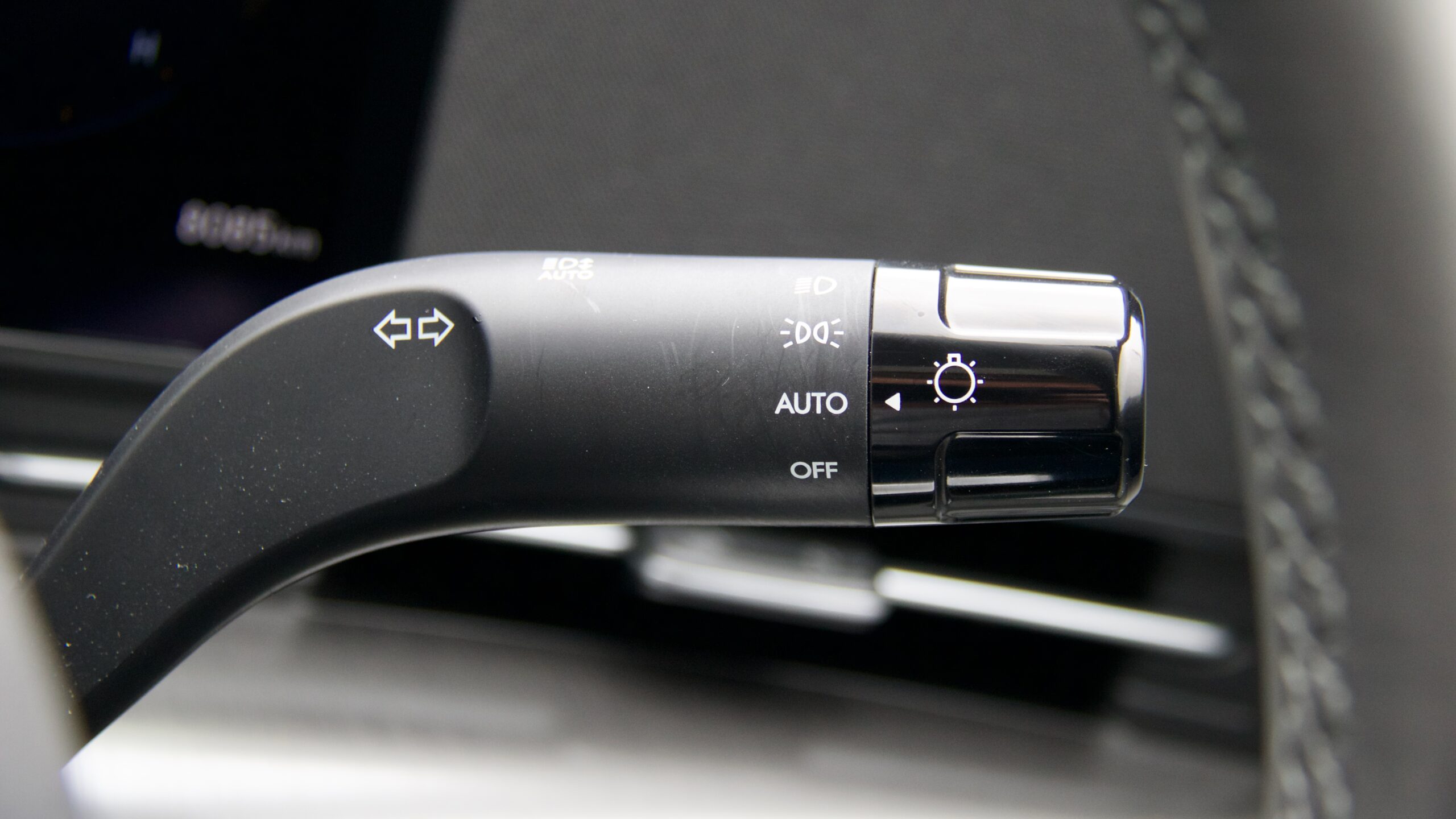
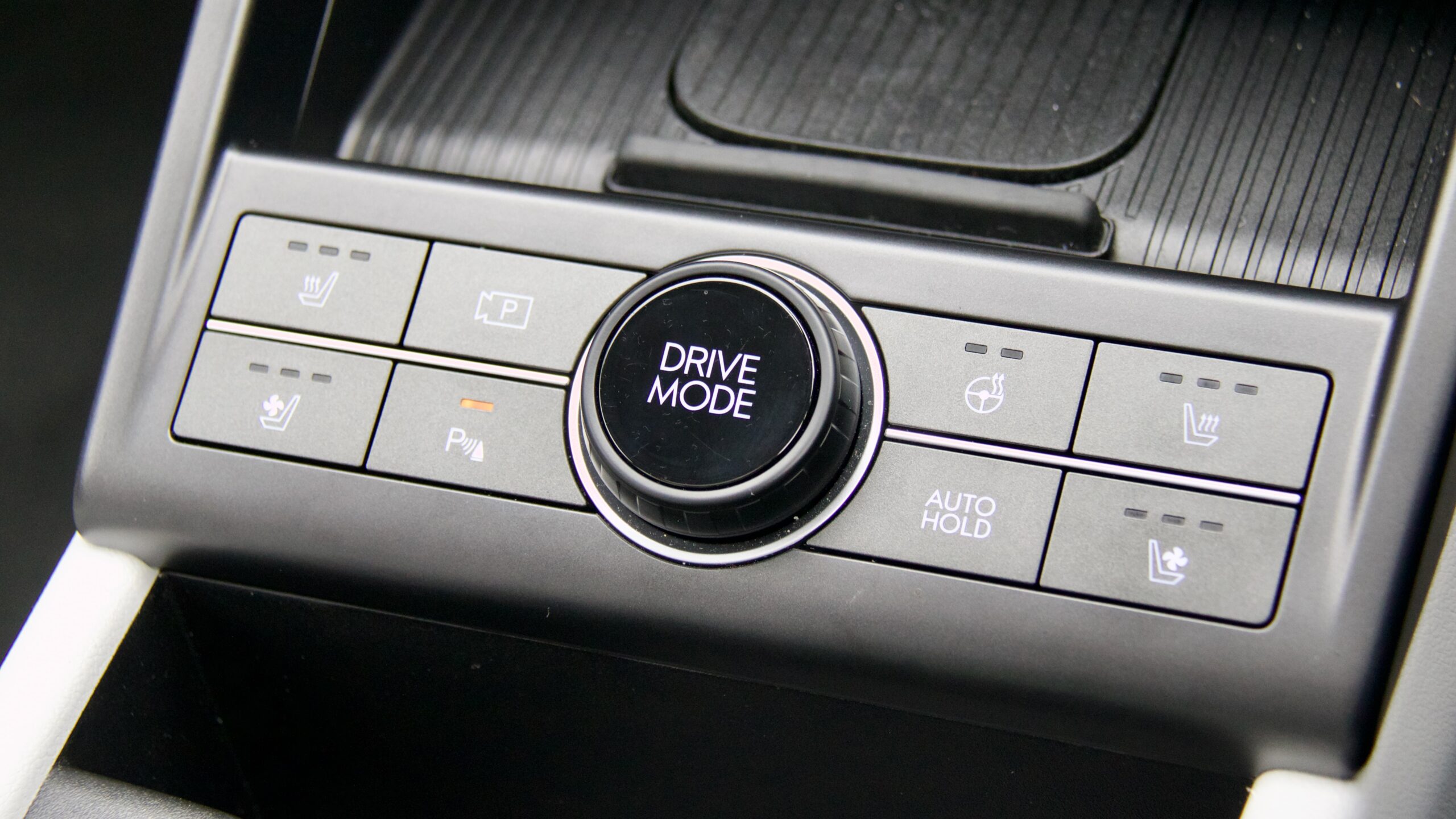
Kona Premium colour options:
- Atlas White
- Mirage Green (on our test car)
- Denim Blue (+$595)
- Abyss Black (+$595)
- Ultimate Red (+$595)
- Ecotronic Grey (+$595)
Black leather trim is standard while green leather is available with black, white and grey exterior options and white leather (on our test car) is available on green, red and blue options. Both alternate interior trims add $295 to the price, while a sunroof is available for $1,500 and an N Line Package with sportier exterior styling and larger 19-inch wheels adds $3,500 to the price ($42,500 +ORC).
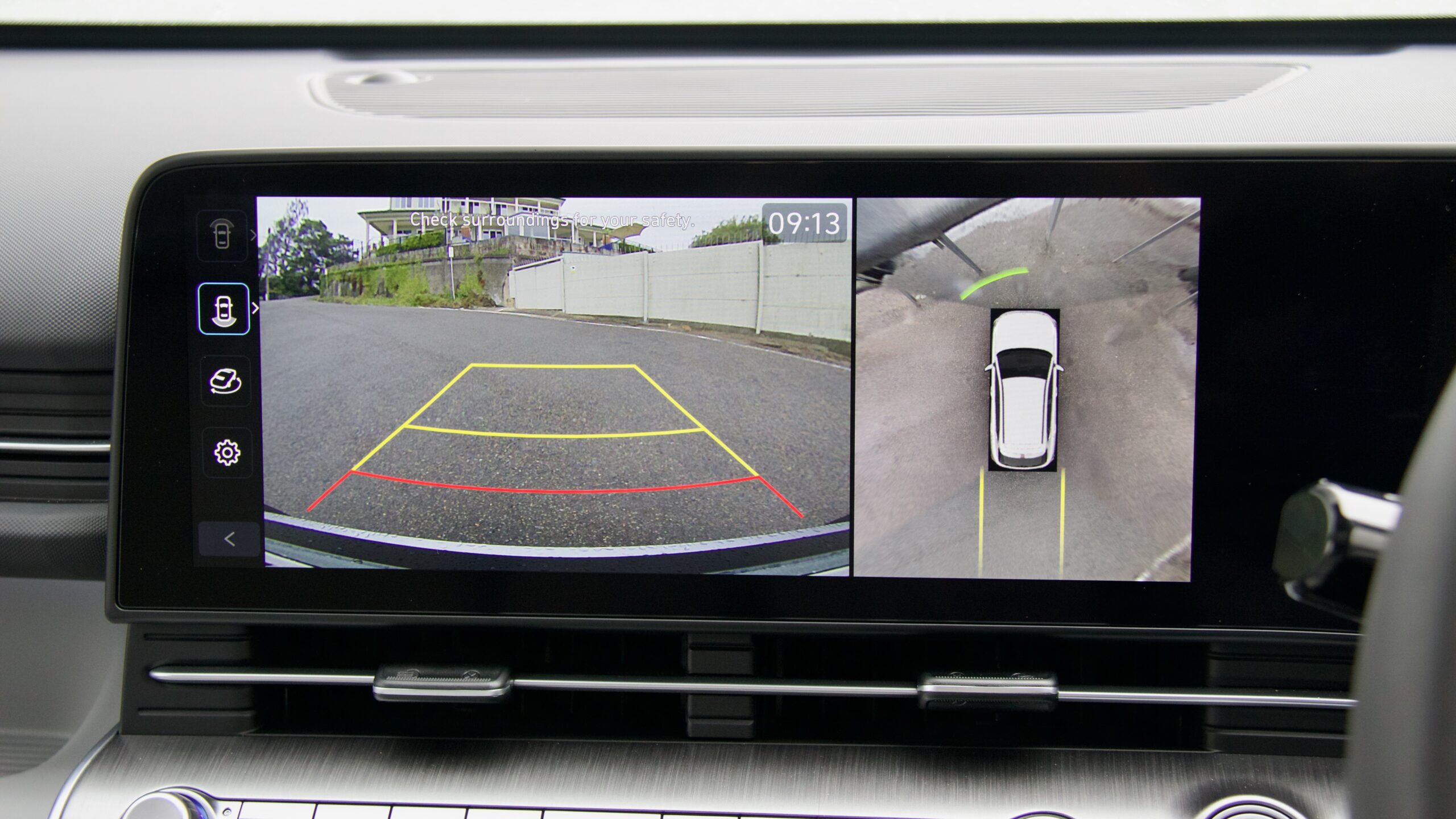
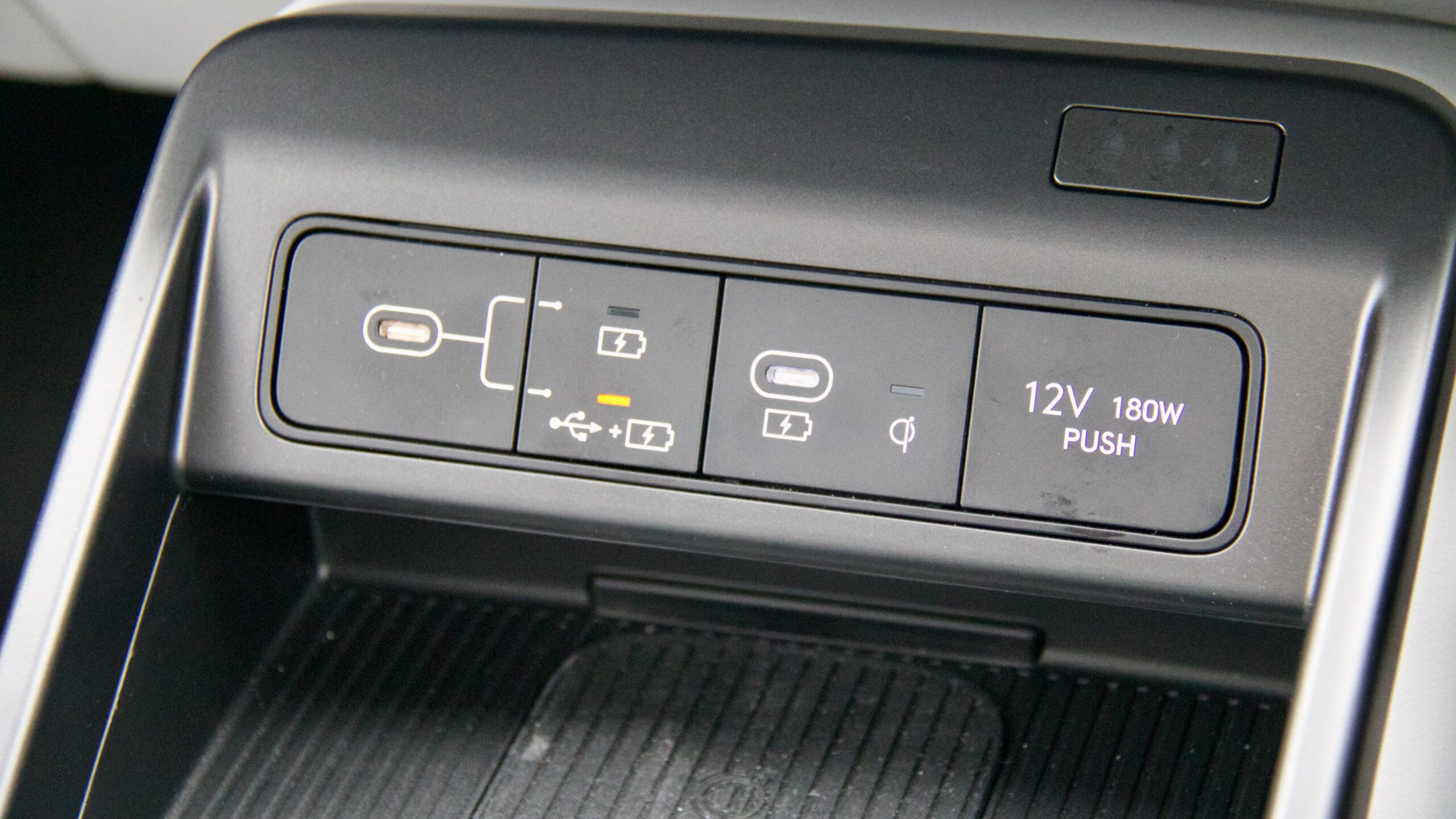
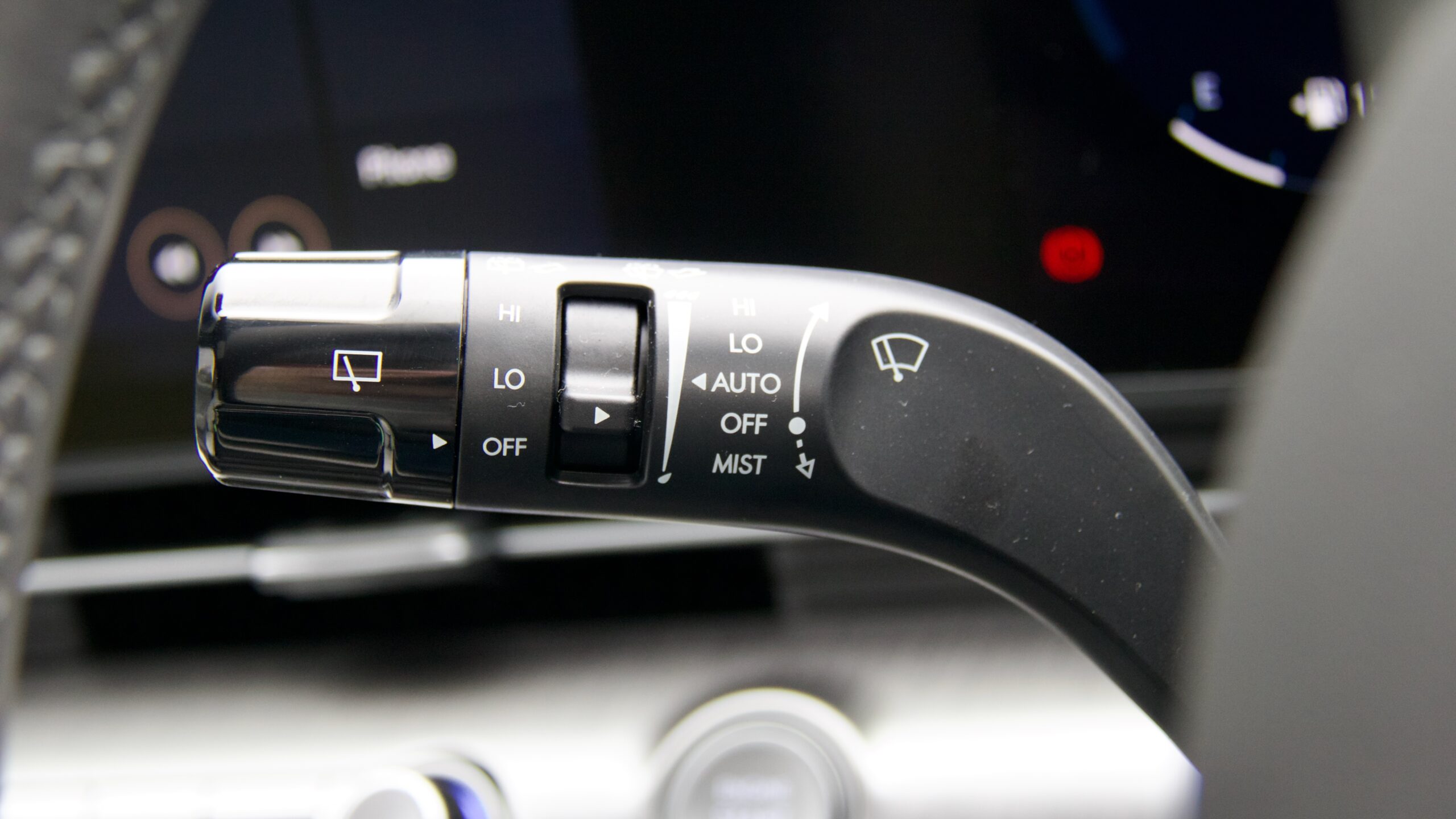
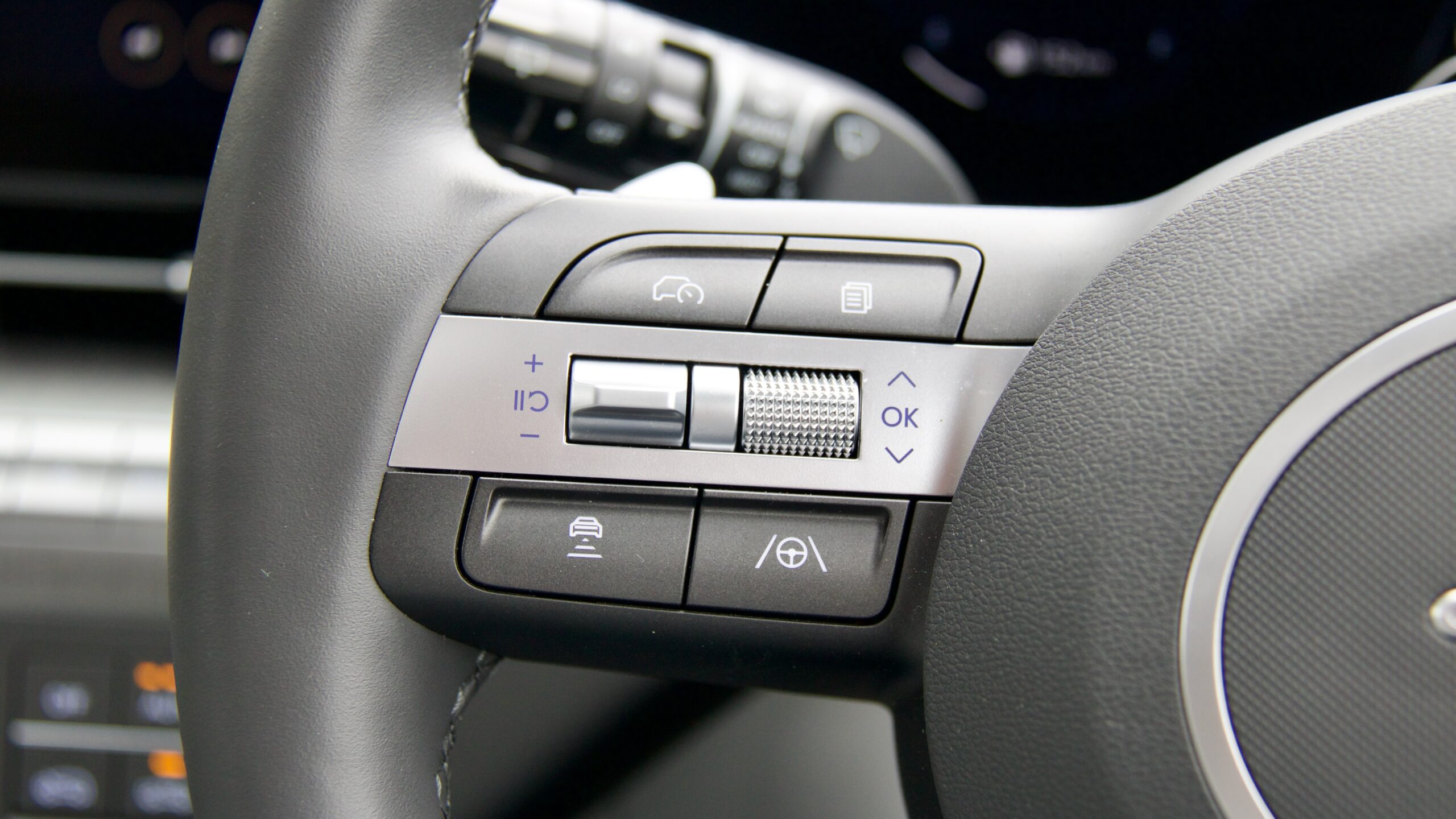
While there’s a long list of rivals to the Kona, we consider the Mazda CX-30 G20 Touring (around $45,000 with the optional Vision Technology Package) and the Kia Seltos GT-Line ($44,590 drive away) to be the Kona Premium’s main rivals. All three use 2.0-litre petrol engines and are front-wheel drive. Over the more expensive CX-30, the Kona adds an electric front passenger seat, rear USB ports, larger infotainment and driver’s screens with live services, roof rails, an extra airbag, heated and ventilated front with heated rear seats, a heated steering wheel, an electric tailgate. The Mazda adds wireless smartphone mirroring, a head-up display and front cross-traffic alert, but the Kona is both cheaper and better equipped.
Against the Seltos – which shares its mechanicals and a lot of equipment with the Kona – the Kona is more evenly equipped but less expensive to buy. It adds an extra airbag, larger dual 12.3-inch interior screens and an extra zone of climate control, but the Seltos has a sunroof and a head-up display over the Kona. Overall, we think the Kona Premium adds more than enough equipment over the regular Kona – and its rivals – to continue to offer the strong value that the Hyundai brand is known for.
How fuel efficient is the 2023 Hyundai Kona Premium?
Under the bonnet of the 2023 Hyundai Kona 2.0 MPi is a 2.0-litre four-cylinder petrol engine that’s from the ‘Smartstream’ engine family in the Hyundai Kia Group. In the Kona, it makes 110kW of power (at 6,200rpm) and 180Nm of torque (at 4,500rpm) and is mated to a CVT automatic transmission with eight stepped ratios for a more natural driving feel. Funnily enough, the same engine features in the Seltos and feels peppier in that car thanks to its lesser tare weight than the Kona (1,375kg versus 1,427kg). The CX-30 feels quicker than that thanks to its lesser weight (1,360kg), more power and torque (114kW and 200Nm) and six-speed automatic transmission.
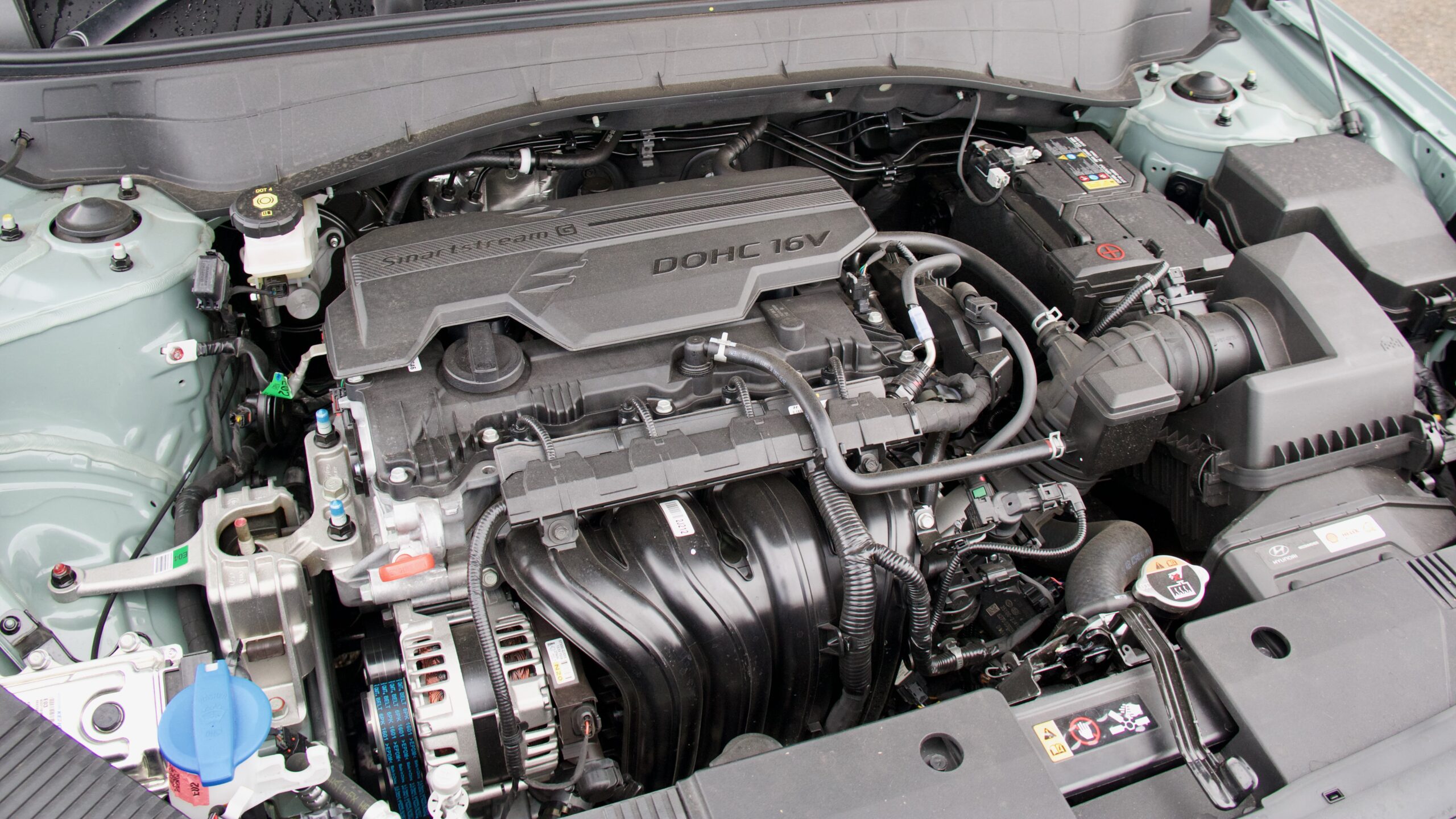
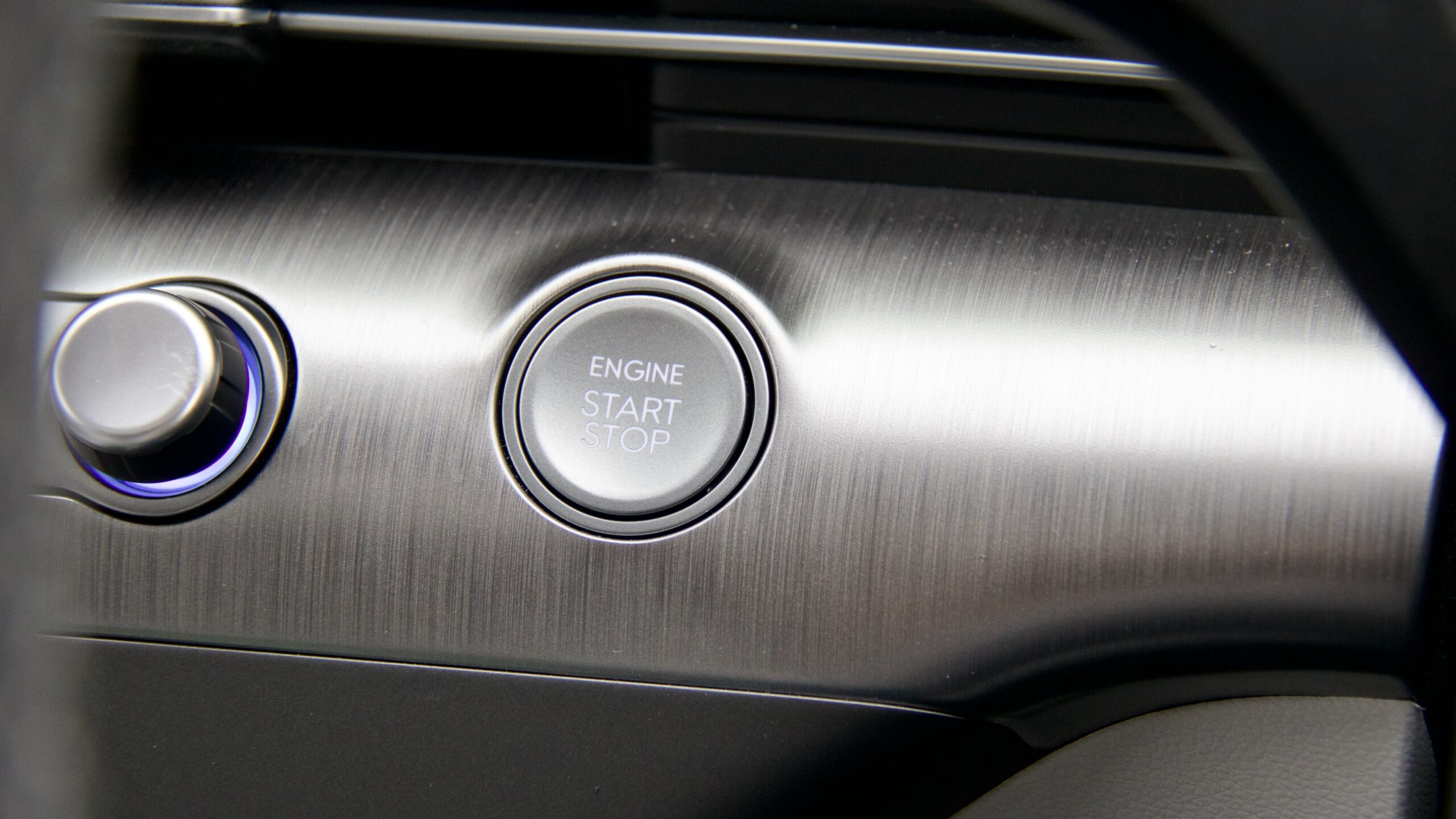
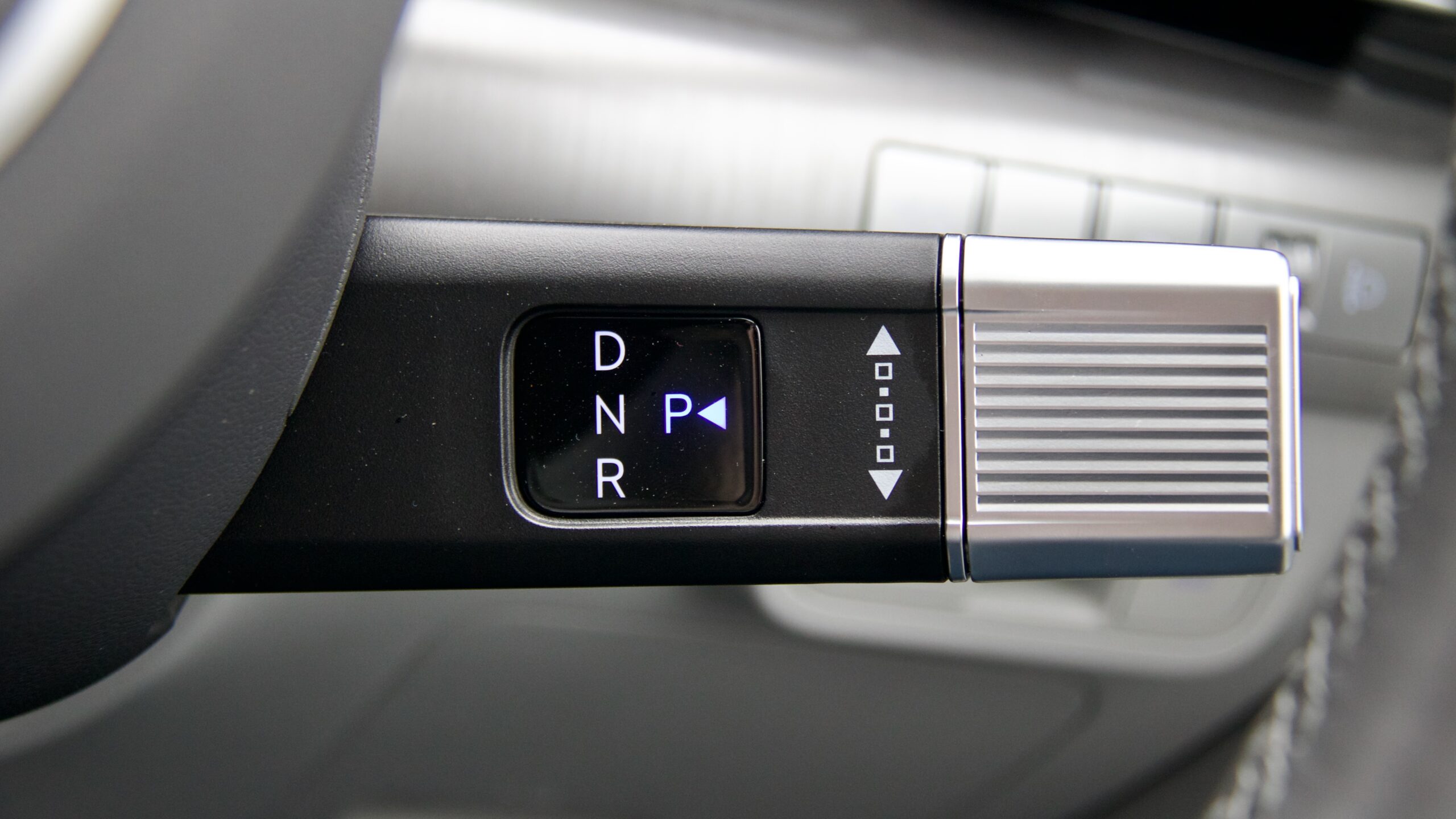
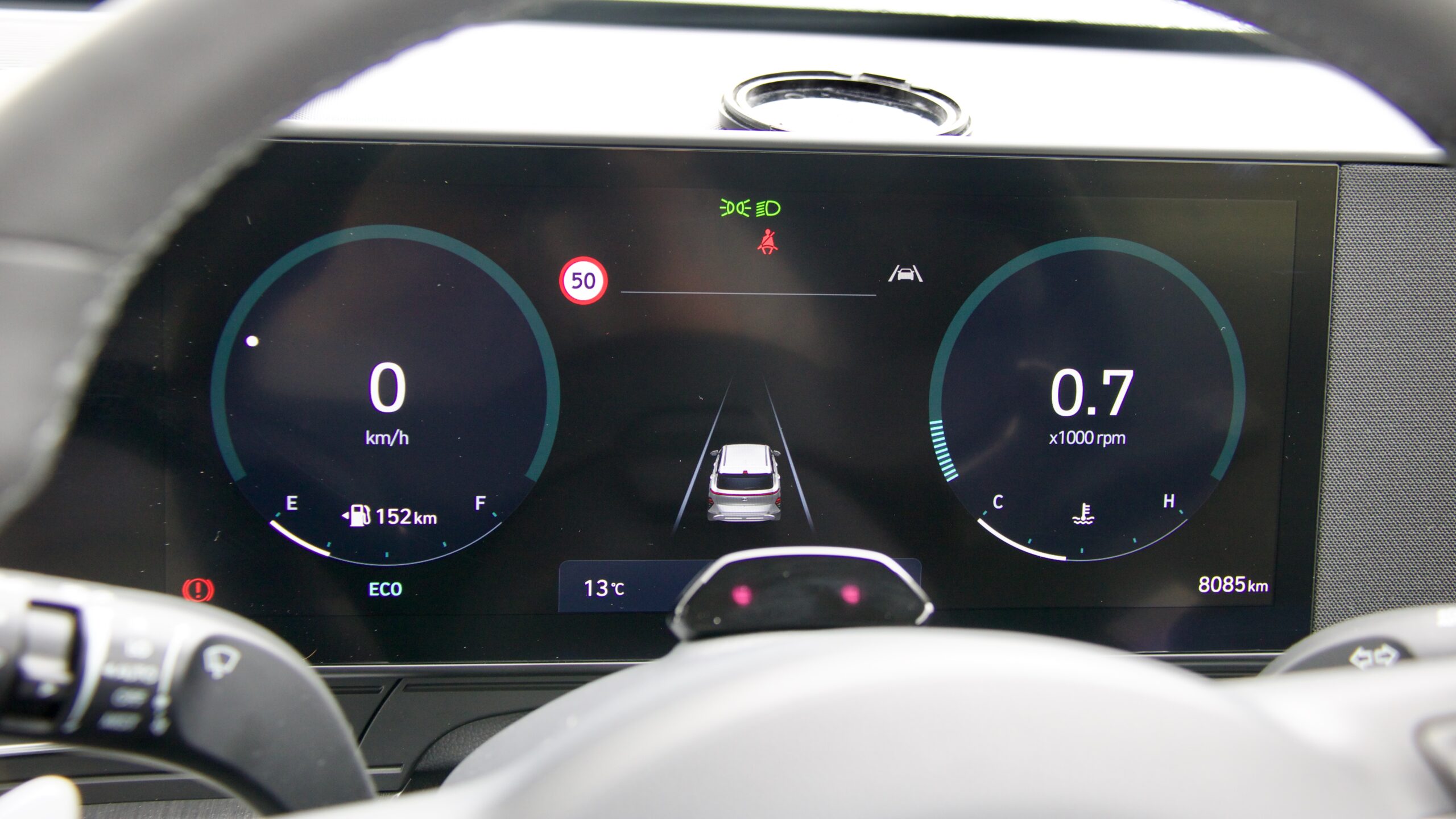
The engine in the Kona is one of the few carryover parts from the previous generation car, and because of the size – and weight – increase over the old car, it doesn’t feel quite as peppy as the old car. Because of that, you do have to floor it a bit if you need reasonable acceleration, but keeping up with traffic is no problem for the Kona. When accelerating hard to its red line, the engine can be quite loud, but in regular driving, we quite like its refinement.
The only transmission available for the Kona 2.0 MPi is a CVT automatic with eight stepped ratios for a more natural driving feel. We’ve been quite positive about Hyundai’s CVT before and this version impressed us further because of its more natural feel than a lot of other CVTs we’ve driven. In manual shifting mode, it offers quite a difference in ‘ratios’ and won’t shift up at the red line.
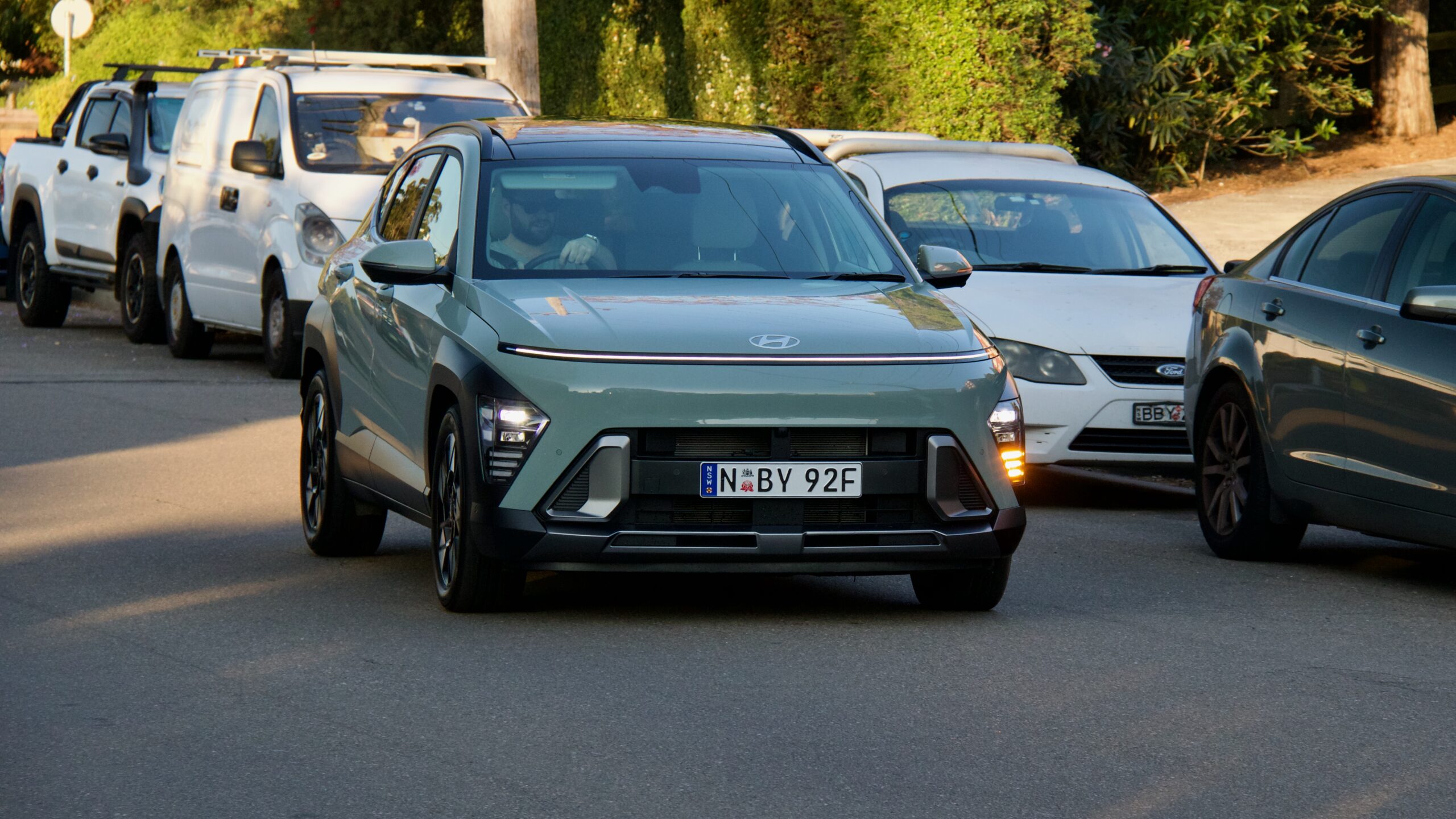
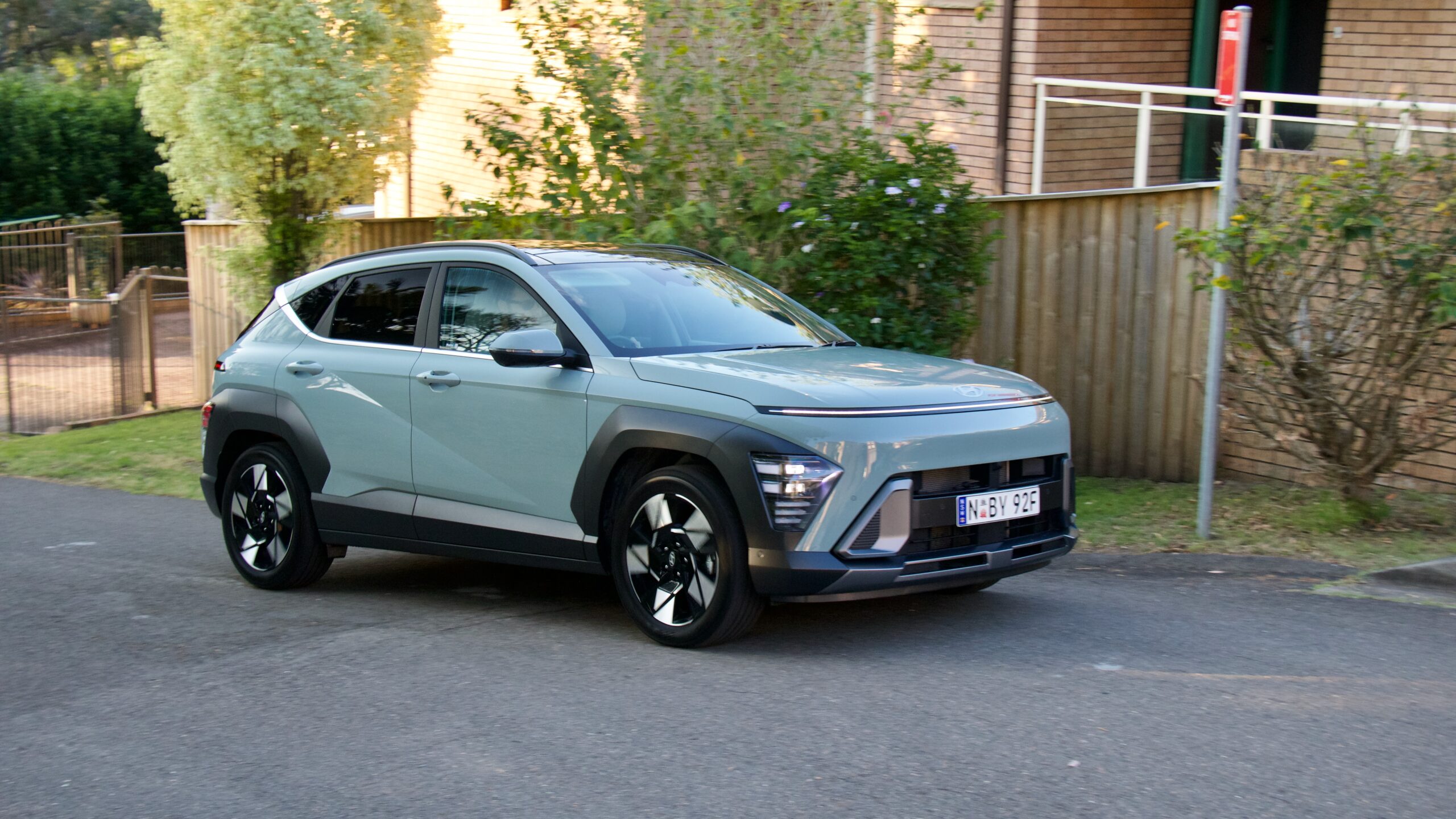
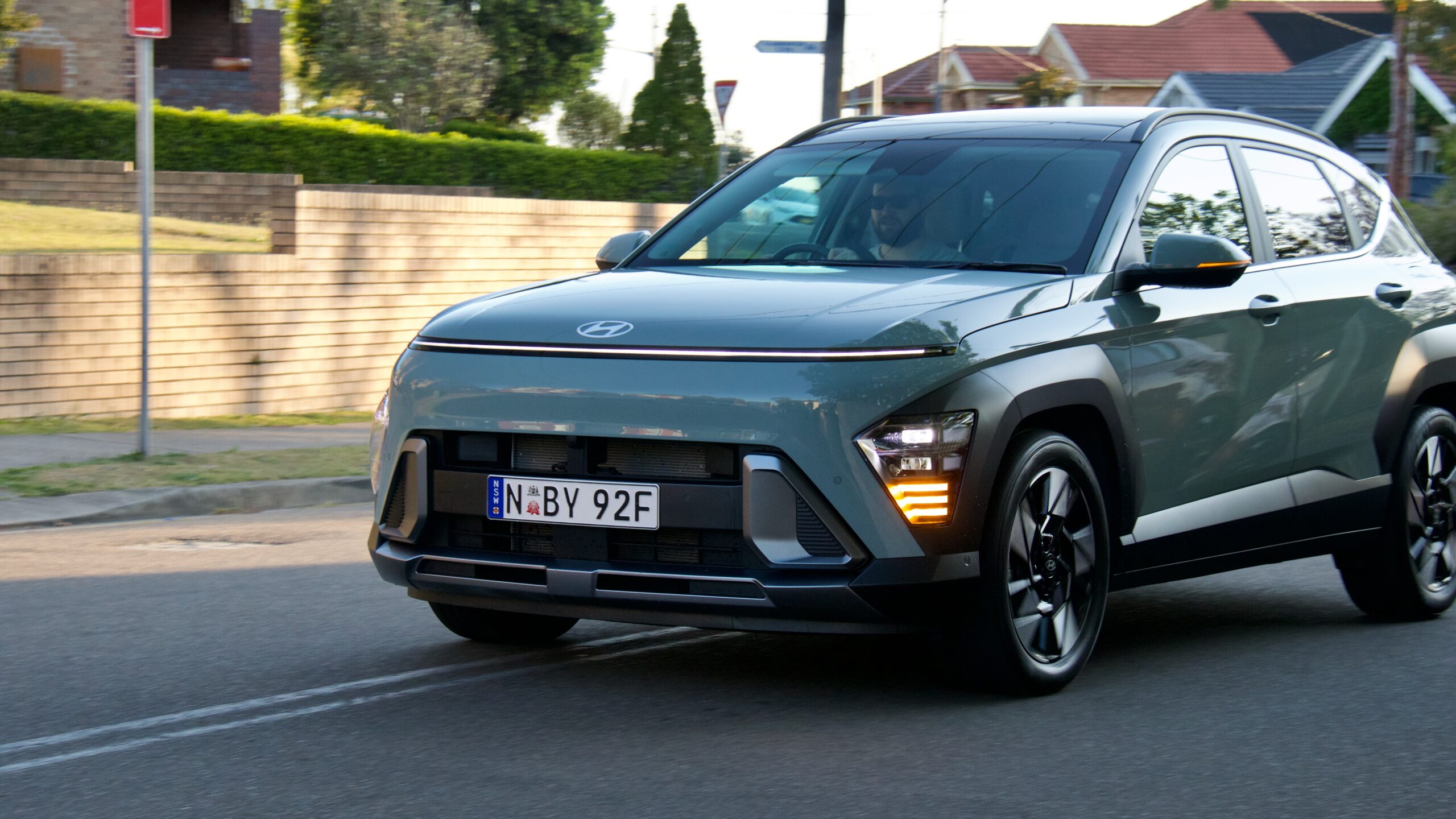
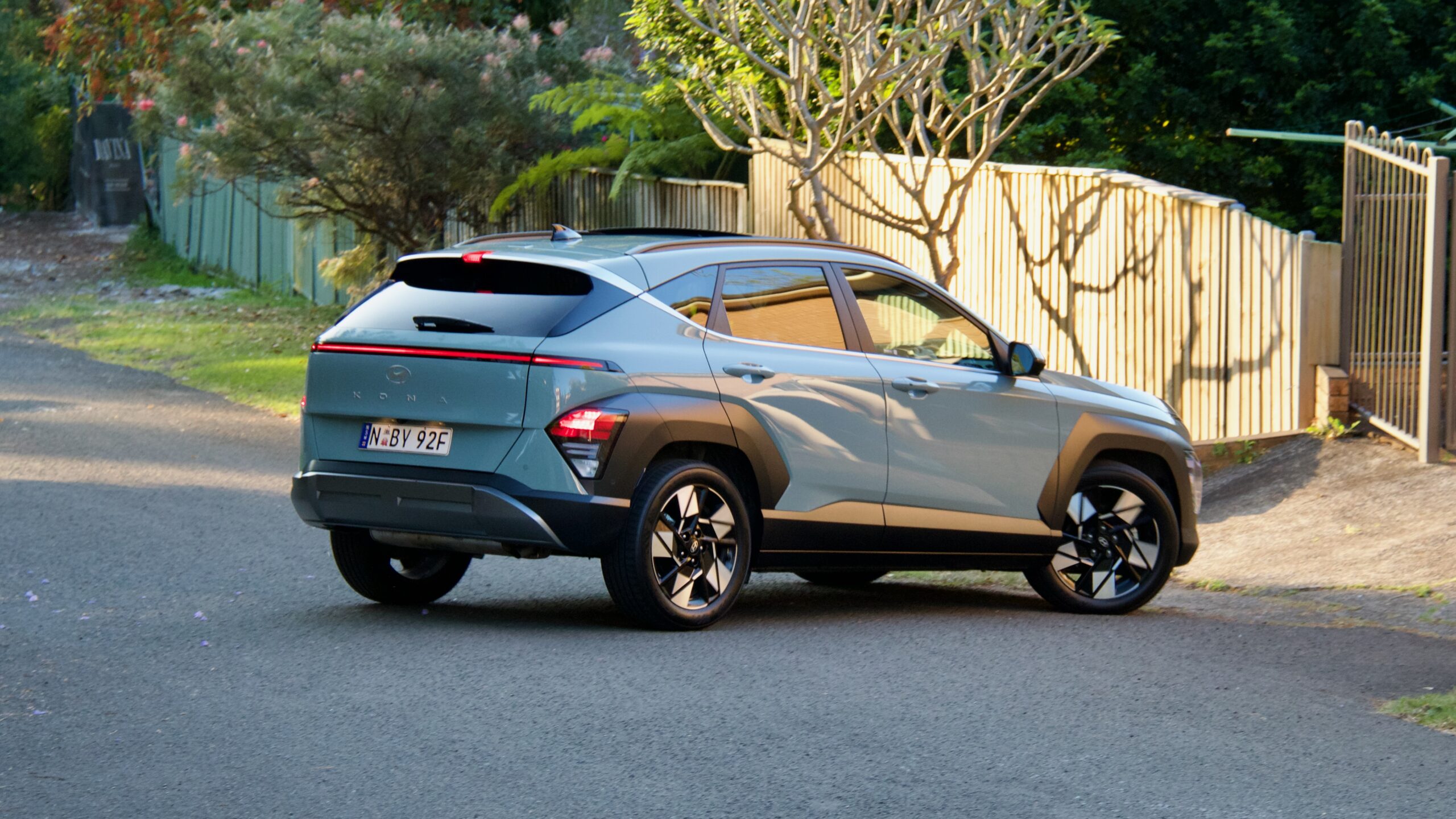
The claimed fuel consumption for the 2023 Hyundai Kona 2.0 MPi is 6.6L/100km on a combined cycle, with CO2 emissions rated at 149g/km – the Seltos is rated at 6.9L/100km and the CX-30 6.5L/100km. In purely urban driving, we used 8.6L/100km, which actually matches Hyundai’s urban claim of 8.6L/100km. It can run on 91RON regular unleaded and has a 47-litre fuel tank.
What is the 2023 Hyundai Kona Premium like to drive?
Based on the same platform as the second-generation Kia Niro, the 2023 Hyundai Kona 2.0 Premium is more mature, refined and better to drive than the first-generation model. Now 145mm longer overall, the Kona is much larger than before, and its wheelbase has grown by 60mm as well, which has resulted in a better ride quality than the first Kona. Having said that, it’s still a touch too firm around town and we think some extra tuning is needed.
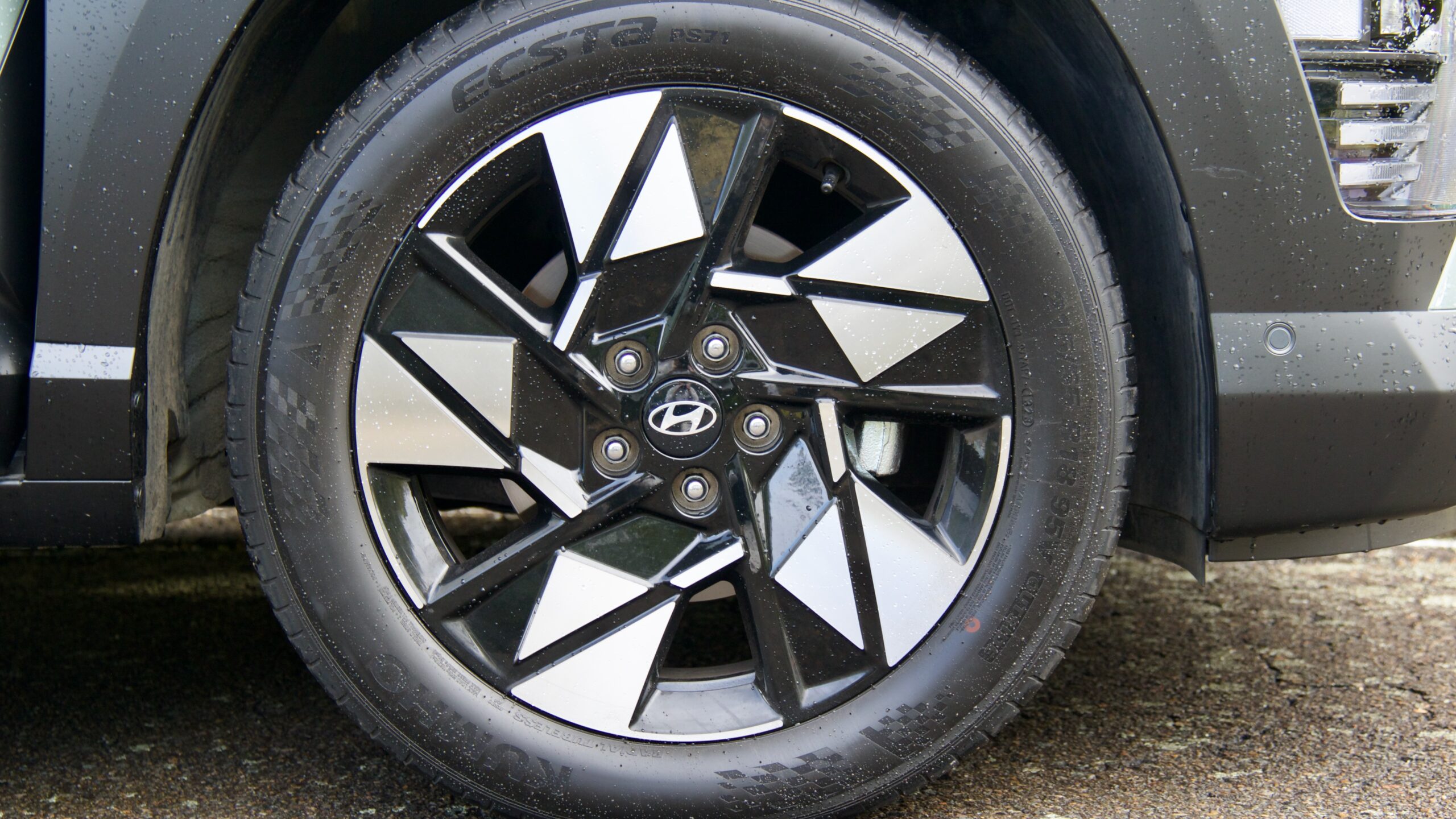
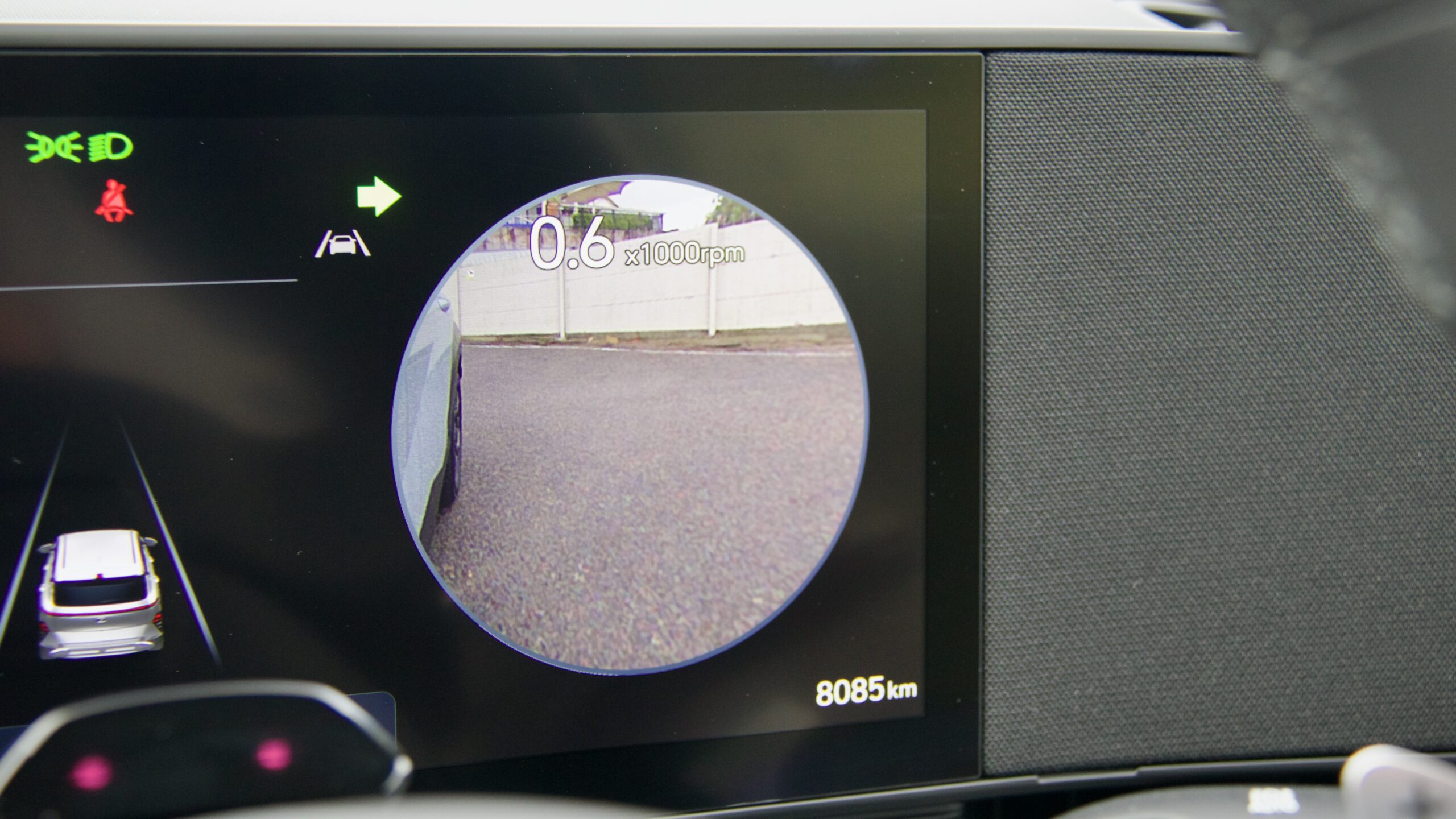
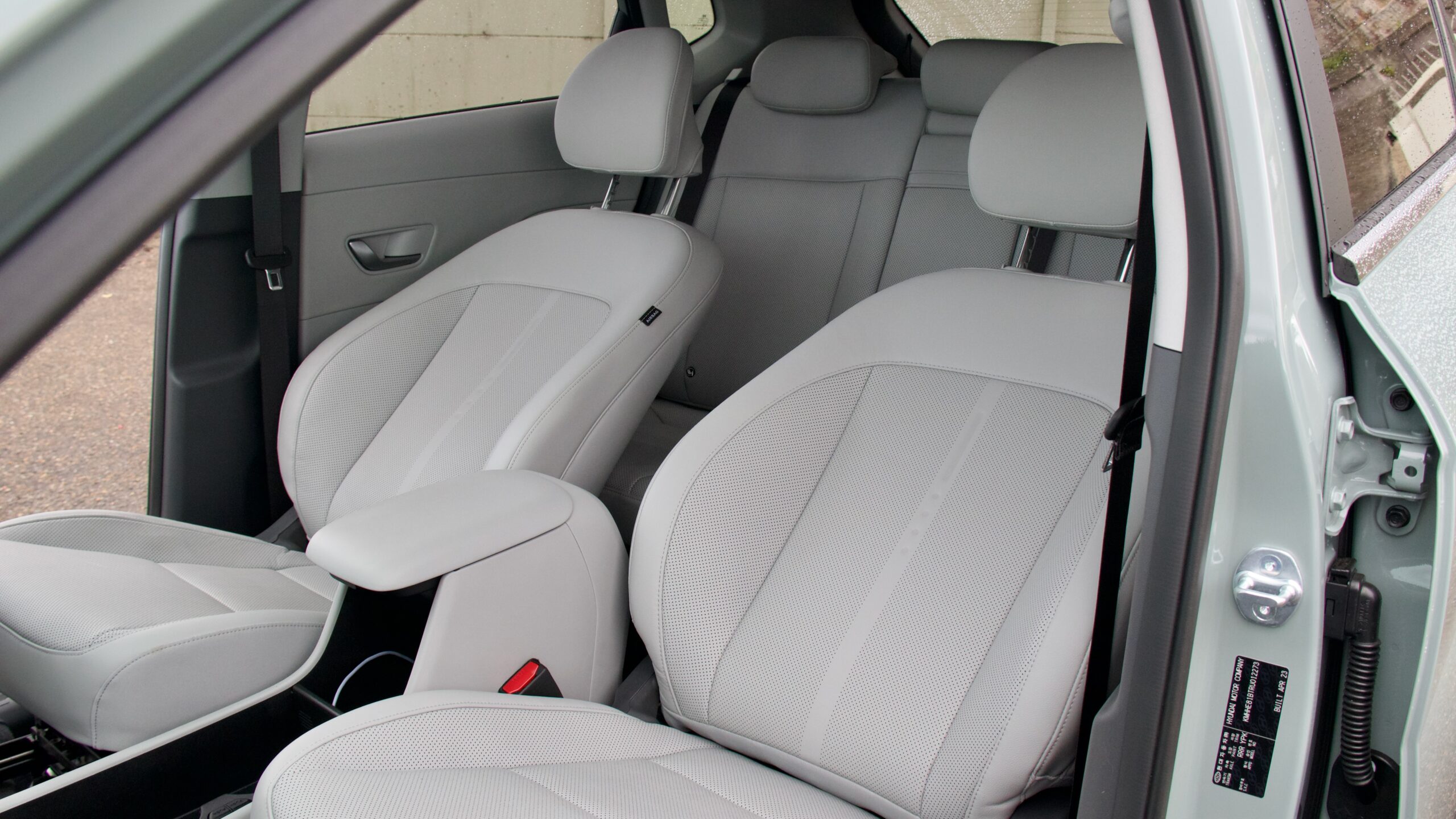
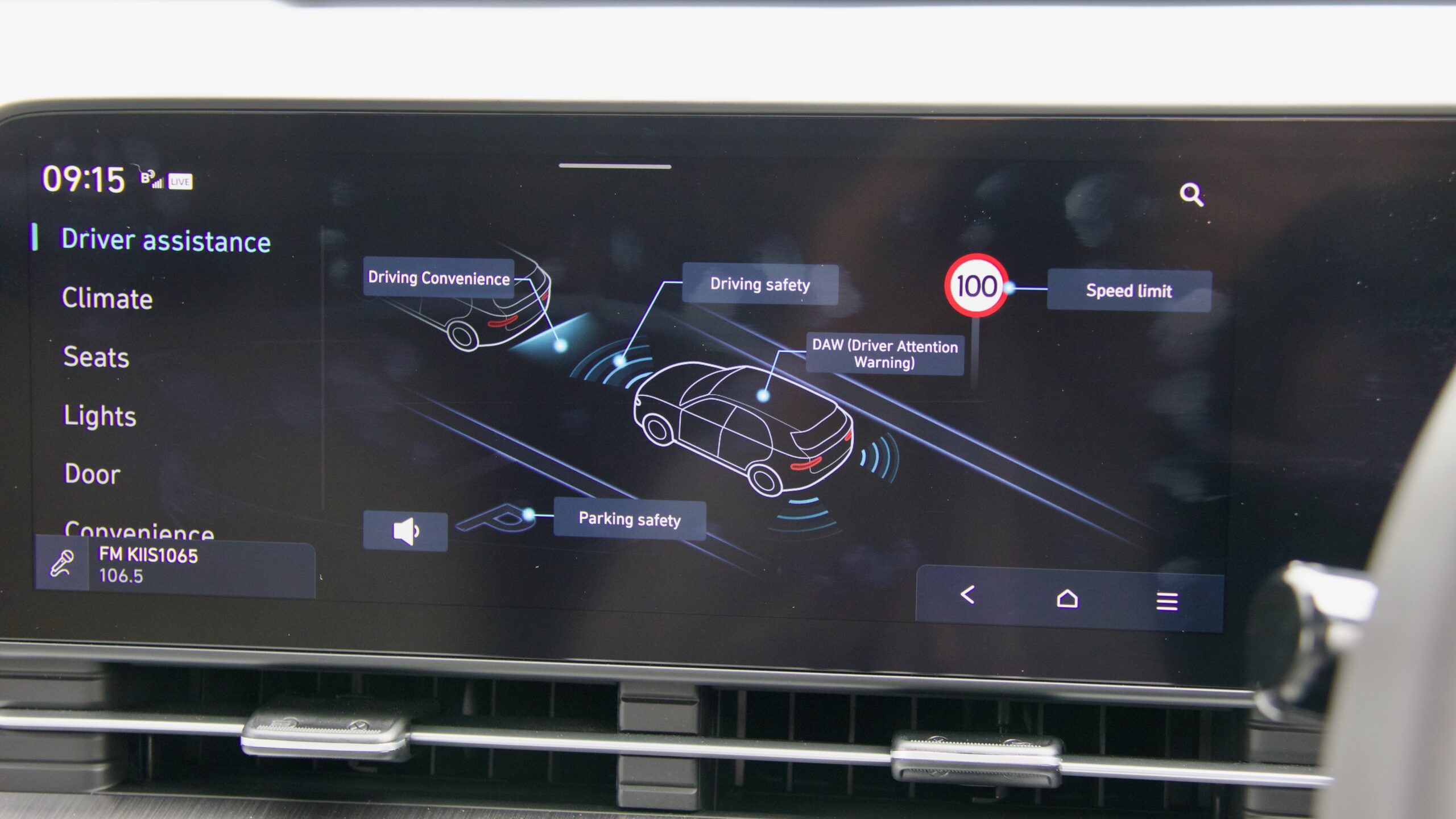
At highway speeds though, the Kona’s ride is excellent. The steering offers reasonable feel and good weighting, while the handling is solid for the class – though both the Seltos and, particularly, CX-30 are more fun to drive if that’s what you’re after. But slightly firm ride aside, the Kona’s ride and handling balance is quite good for the small SUV segment.
Elsewhere the driving experience is a mixed bag. There have been improvements in the Kona’s refinement, and it’s now quieter at speed than before. But like we’ve seen with other recent Hyundai Kia products – including the updated Seltos – the speed sign recognition and warning system is infuriating. It dings at you to tell you that you’re speeding – but, for example, it doesn’t know what day it is, so it warns you on a Sunday driving through a school zone.
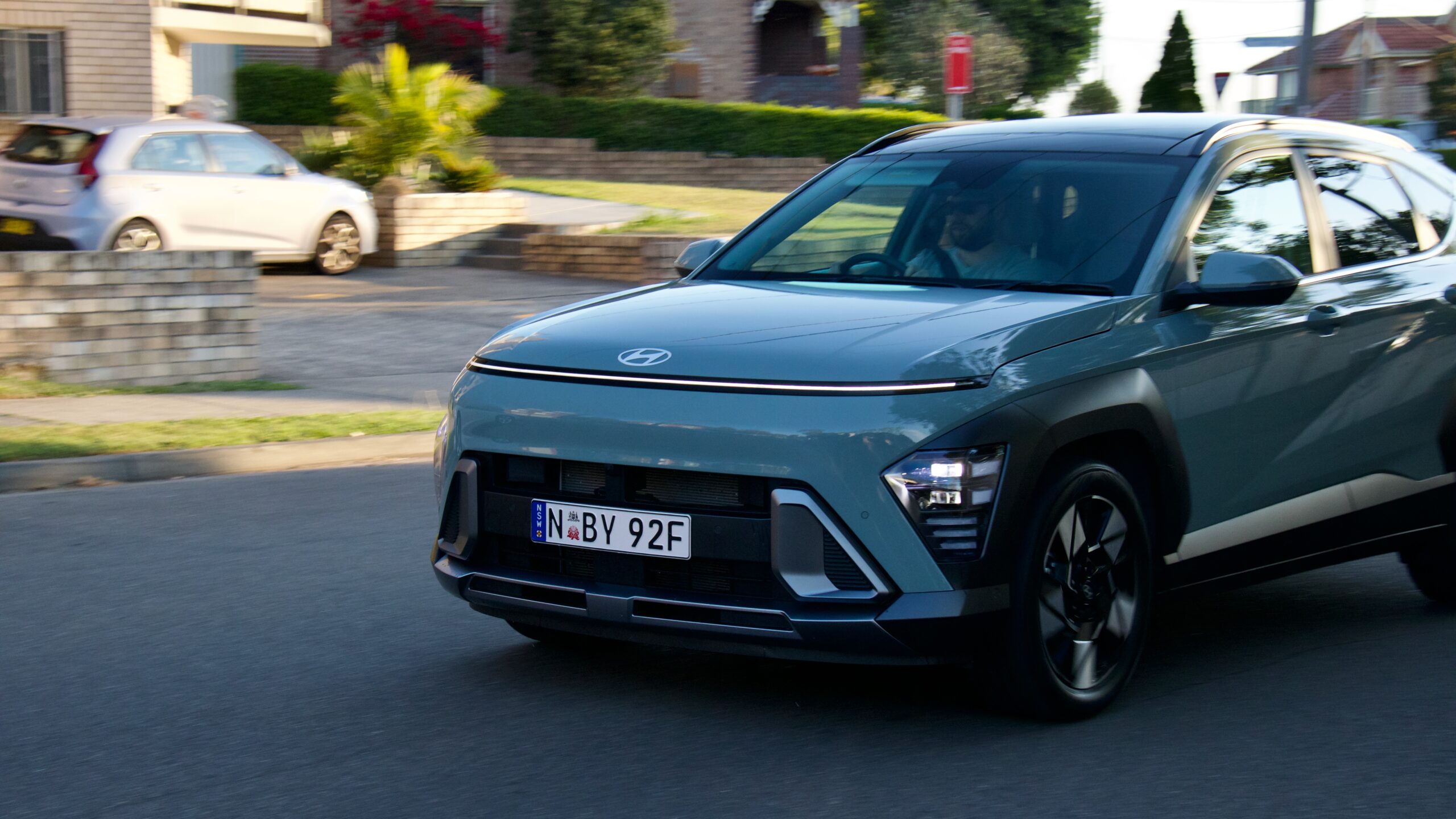
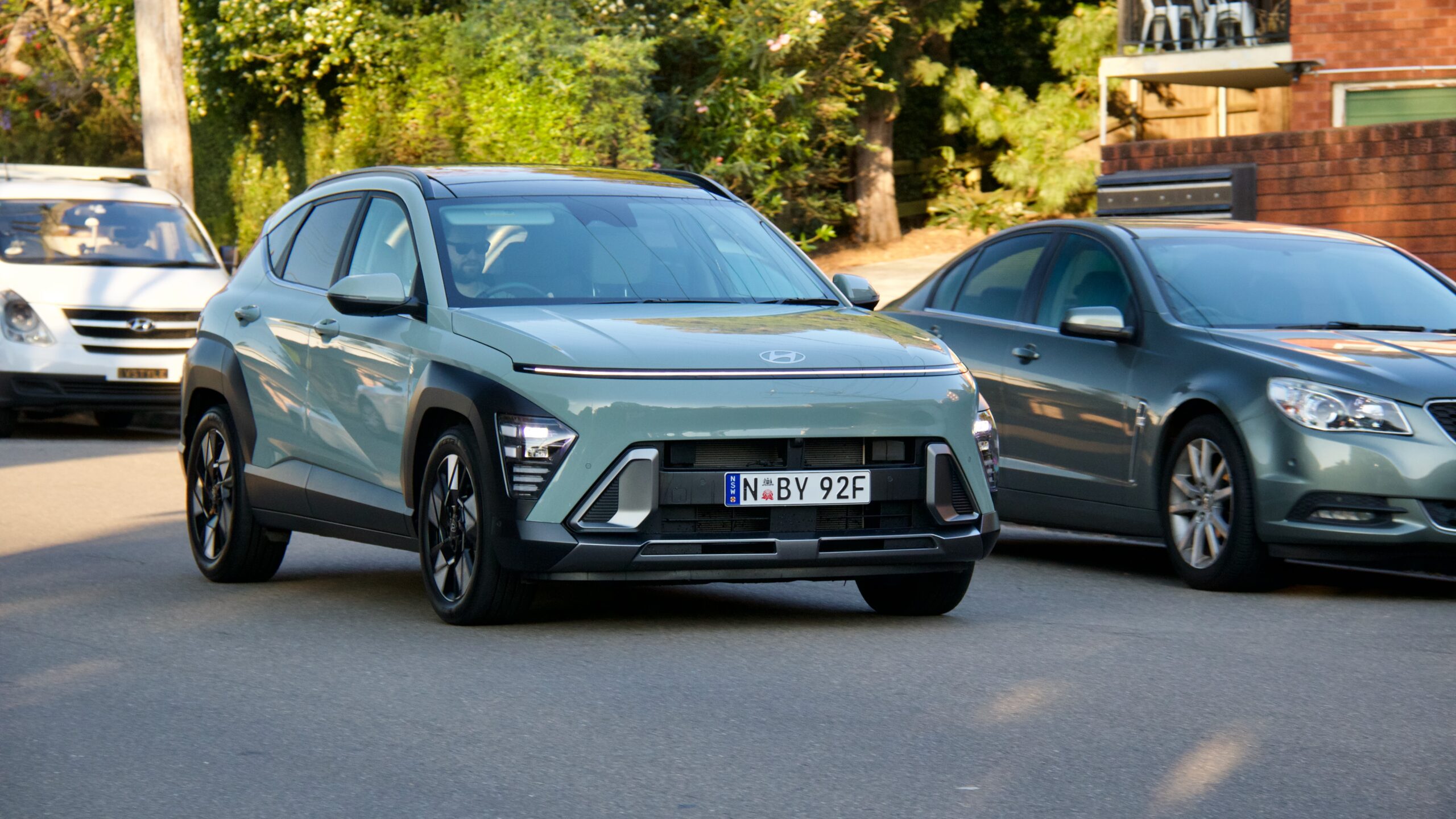
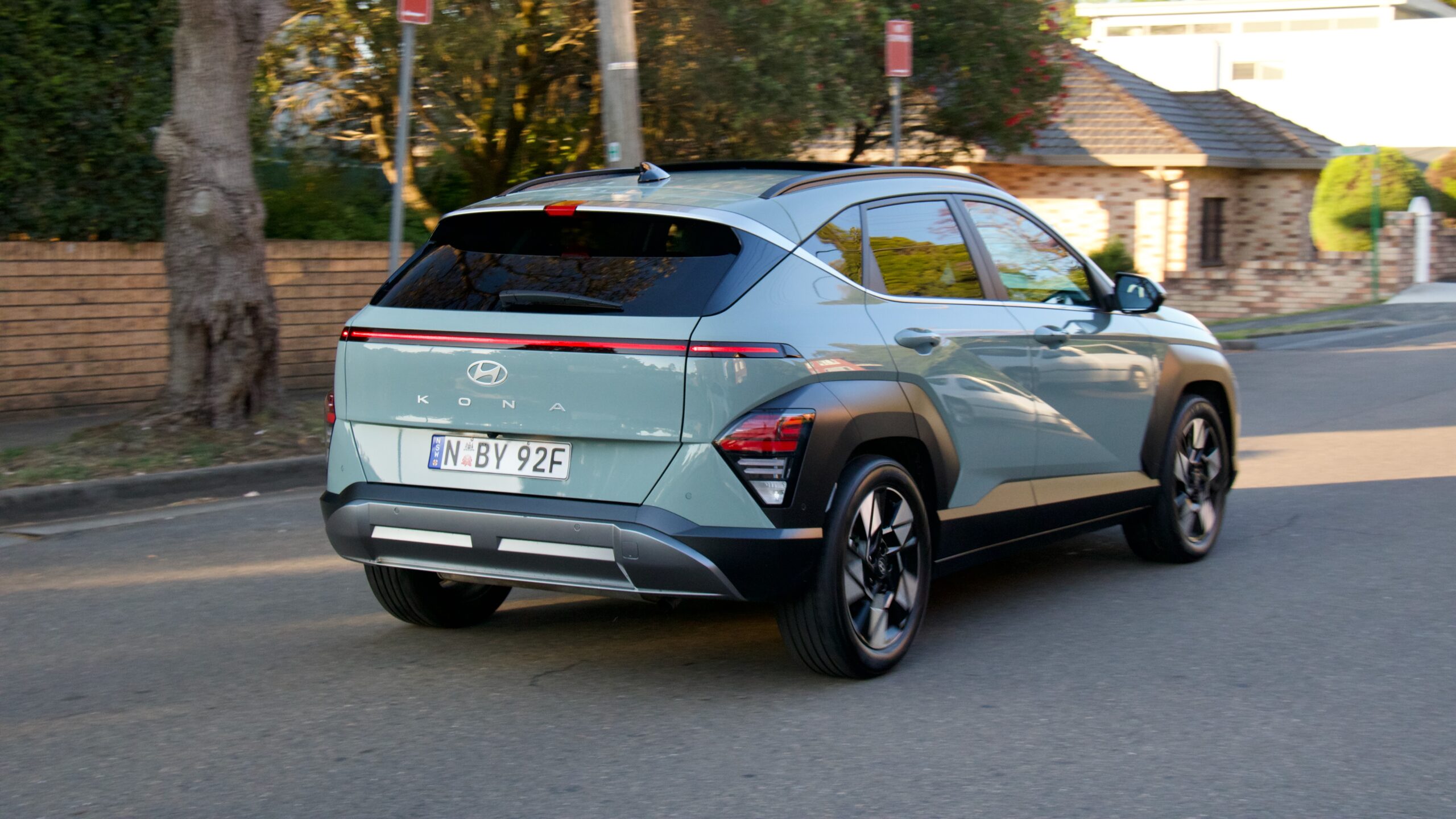
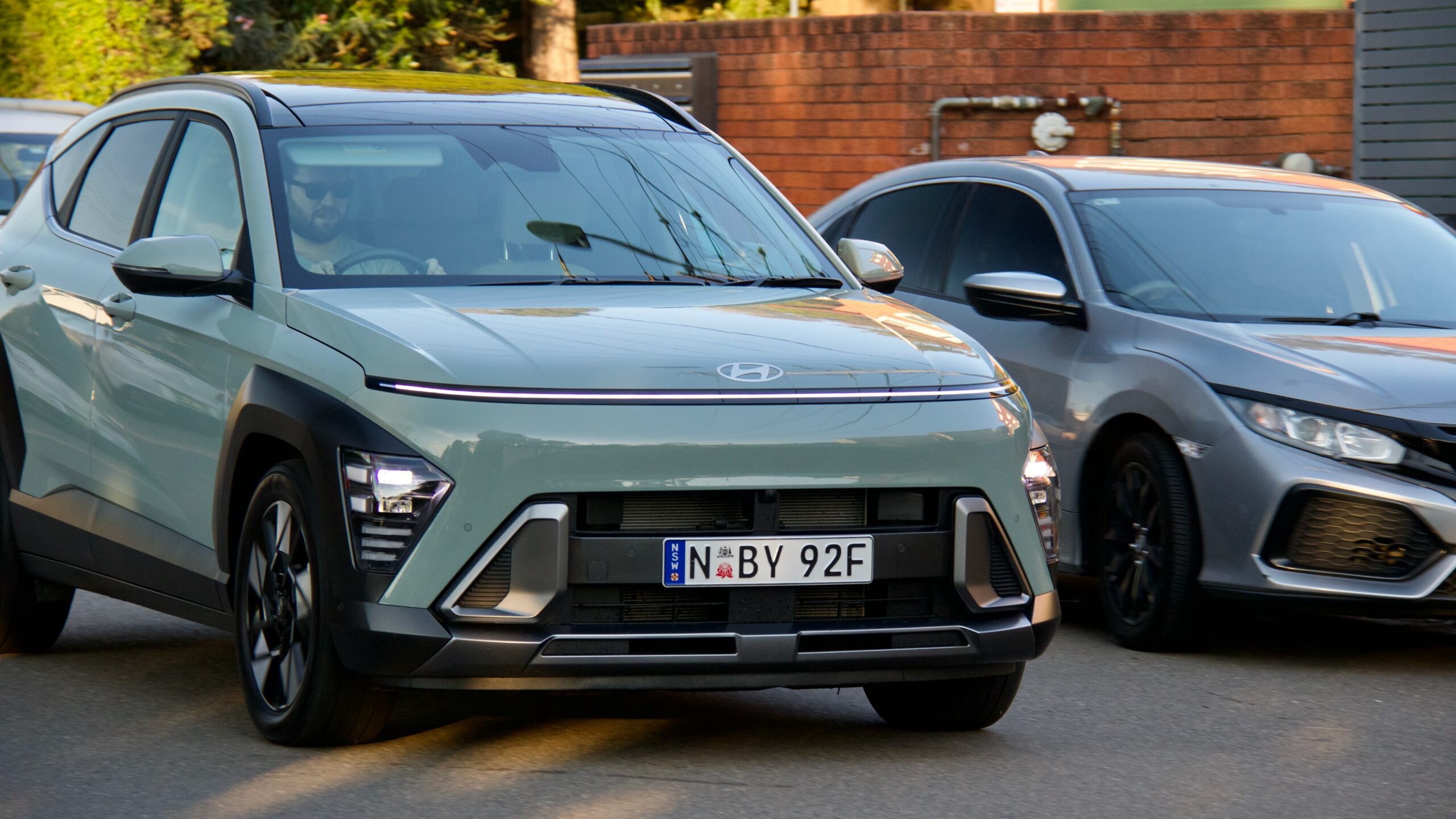
In addition to that is a driver monitoring system that also dings at you for looking anywhere but in front of you, sometimes it bings for no reason at all and the worst part is that these systems are difficult to switch off – they revert to on each time the Kona is started. We’ve heard that an over-the-air fix is coming, and we hope it’s soon because both systems spoil an otherwise pleasant driving experience.
What is the interior of the 2023 Hyundai Kona Premium like?
The interior of the 2023 Hyundai Kona is now more practical thanks to its growth spurt. It’s also more comfortable, features increased practicality and has better tech integration throughout the cabin. One area we still think needs improvement, however, is the quality of the materials used, which are still quite plasticky and the only bit of soft touch is on the door cards – a softer-touch dashboard would help a lot, especially in the Premium. Having said that, the ambience of the Kona’s interior is far superior to the basic Seltos, though the CX-30 feels like a luxury car in comparison.
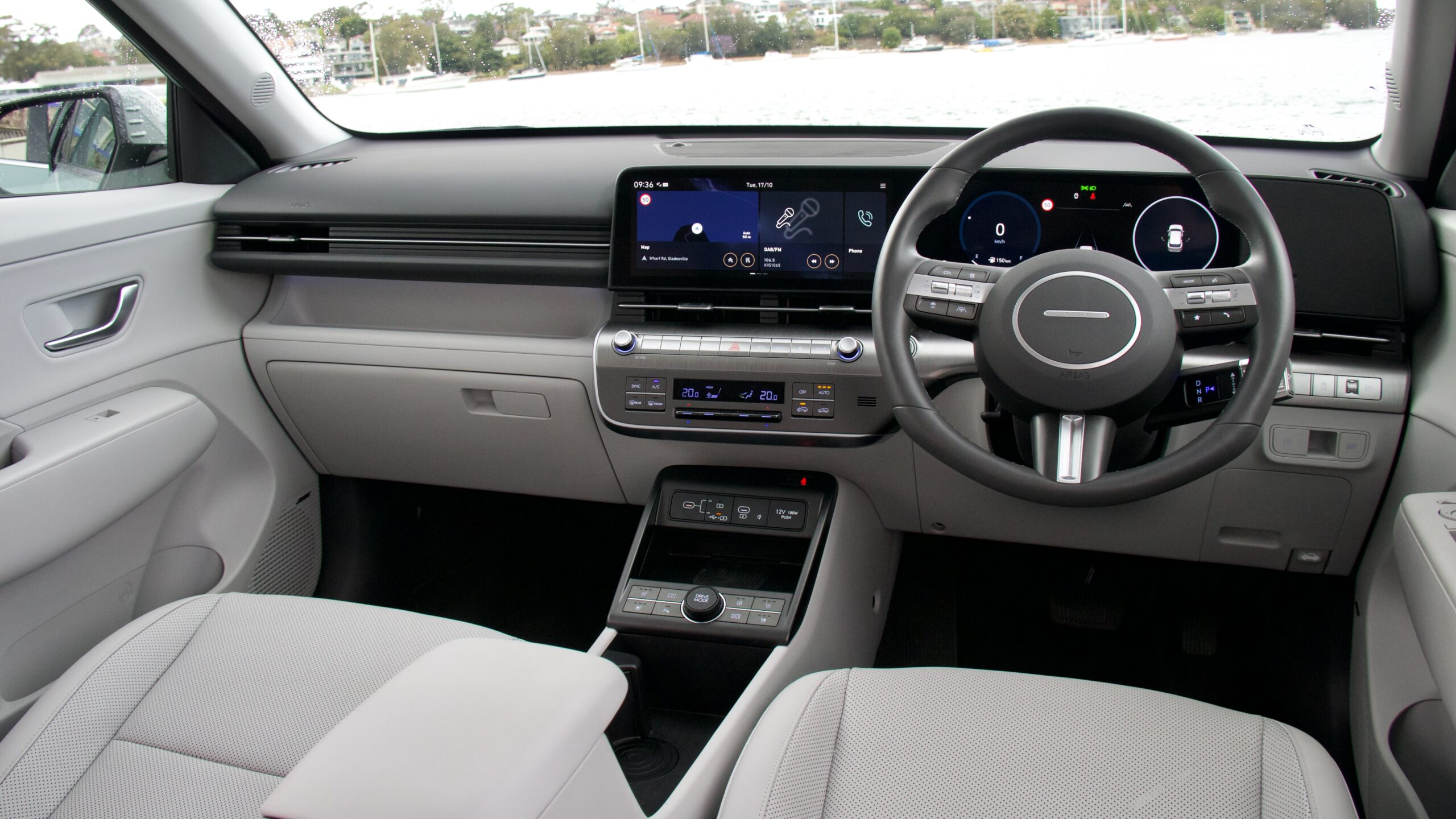
Centre of the Kona’s cabin is a 12.3-inch touchscreen with Hyundai’s new infotainment system. It’s a fairly impressive system that improves on the already-solid system that’s used in the previous Kona and a lot of other current Hyundai products. The Premium adds inbuilt satellite navigation to the base model but it doesn’t feature wireless Apple CarPlay and Android Auto connectivity – it’s apparently being added soon with an over-the-air update.
We wish the colours used in the screen were a bit brighter – especially in the daytime – but it’s otherwise pretty good and the multi-colour LED interior lighting adds a more expensive feel inside too.
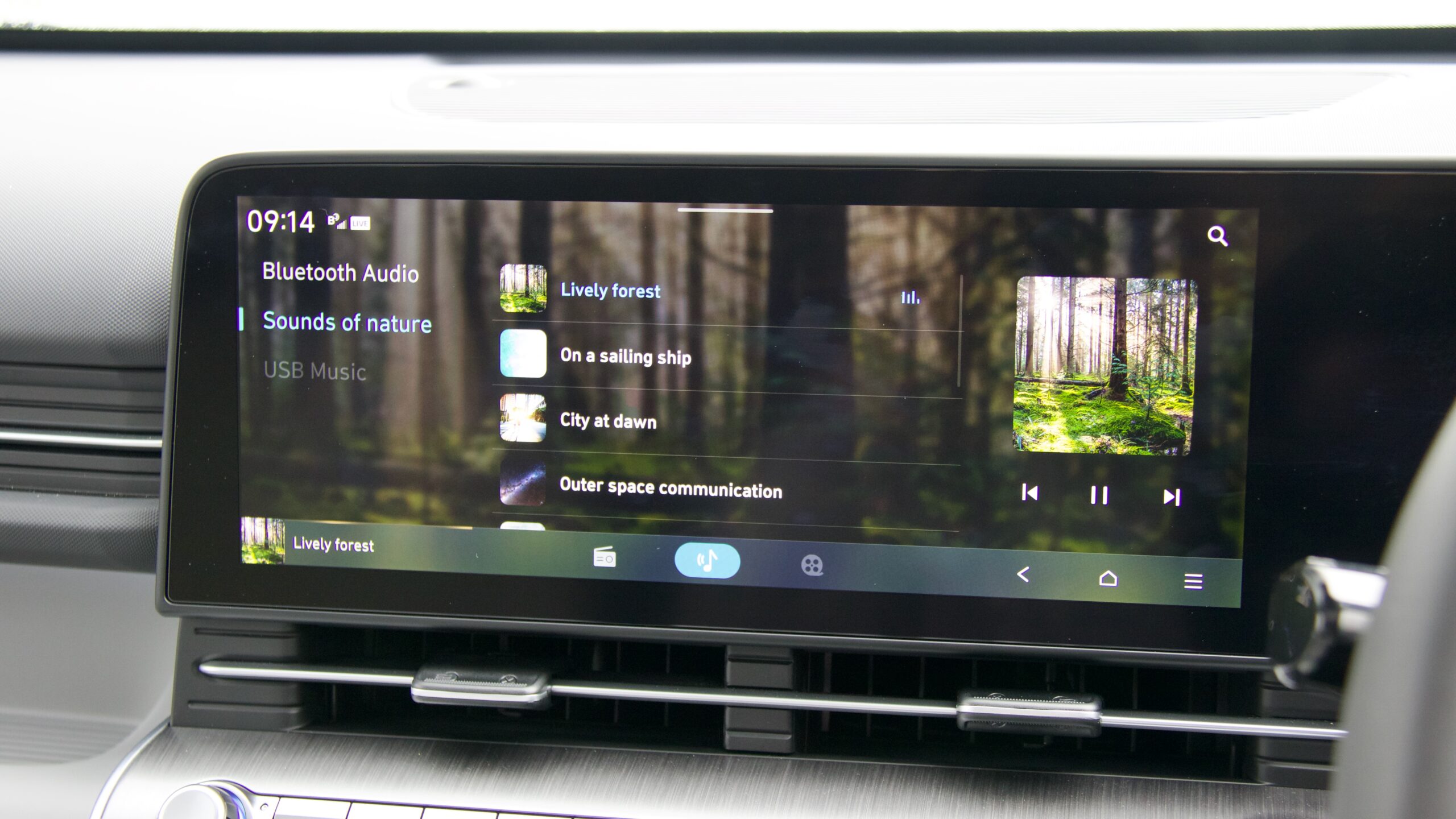

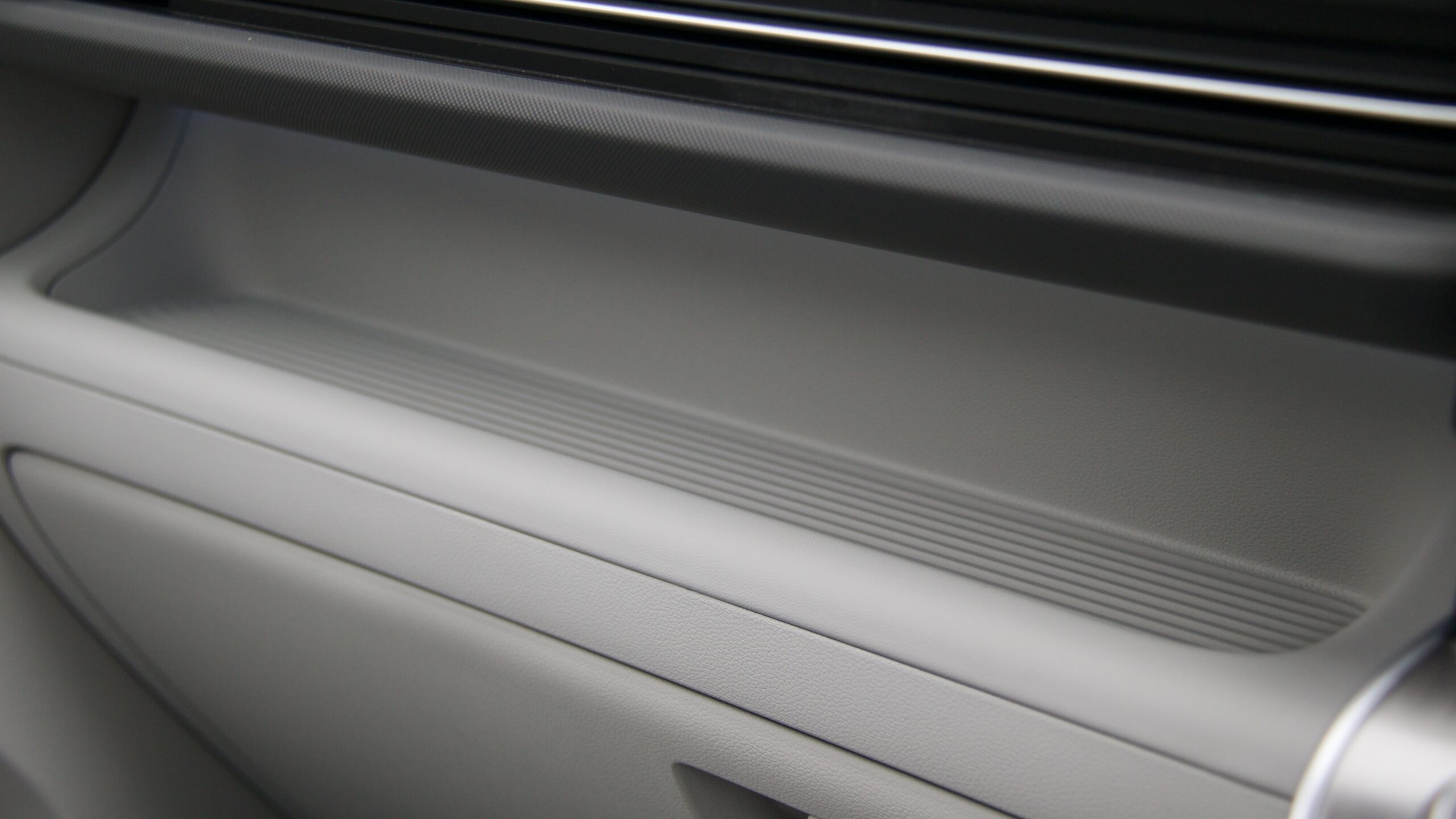
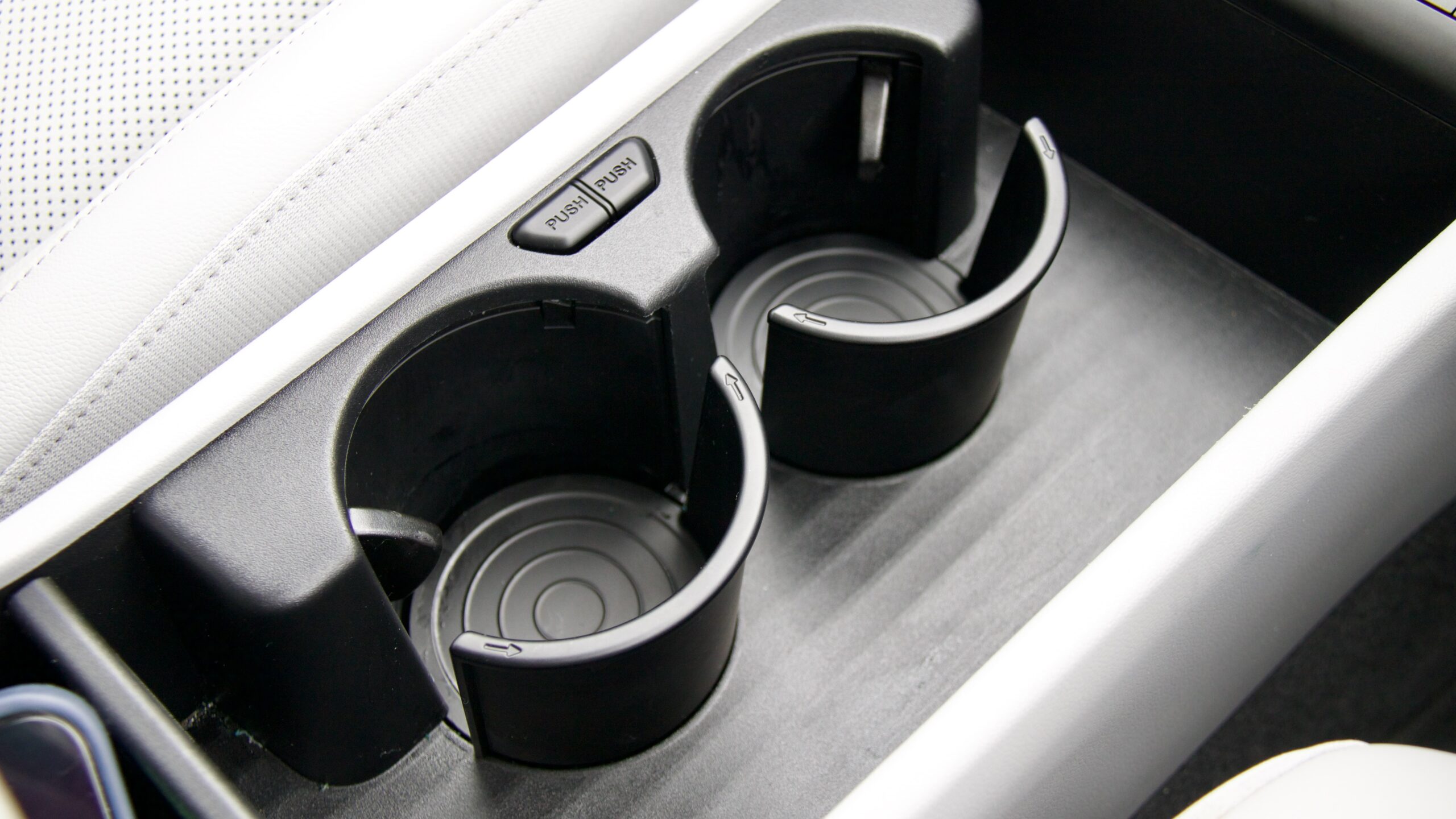
Storage inside the new Kona is also a big improvement on the last model. We love the open centre console storage, big cup holders and the very effective wireless phone charger. Further back is a centre armrest with storage underneath it, while there are also reasonable door bins, a nicely-sized glovebox, an open tray above the glovebox and an open area where the wireless charger is. Pleasingly, in a win for ease of use, the AC controls are separate from the touchscreen.
The back seat is also a good improvement over the previous Kona, and is now one of the roomiest in the segment – much more so than the CX-30. Two six-footers will be more than comfortable thanks to good knee -and headroom, while the seatbacks recline for greater comfort. In addition to that, two USB-C ports, as well as air vents, heated outboard seats, a centre armrest with cup holders, two map pockets and reasonable door storage also feature. There are two ISOFIX points and three top-tether points for child seats.
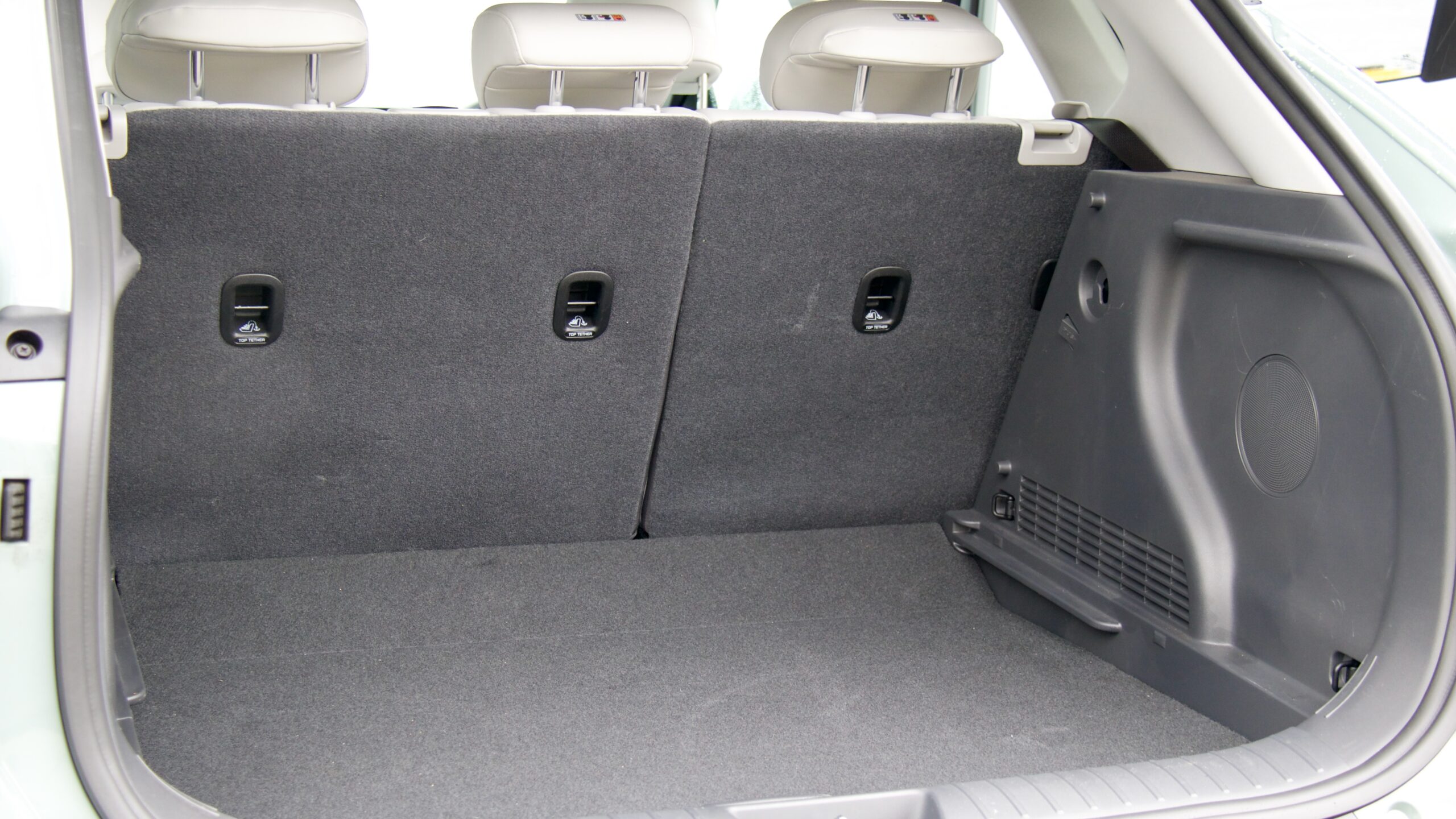
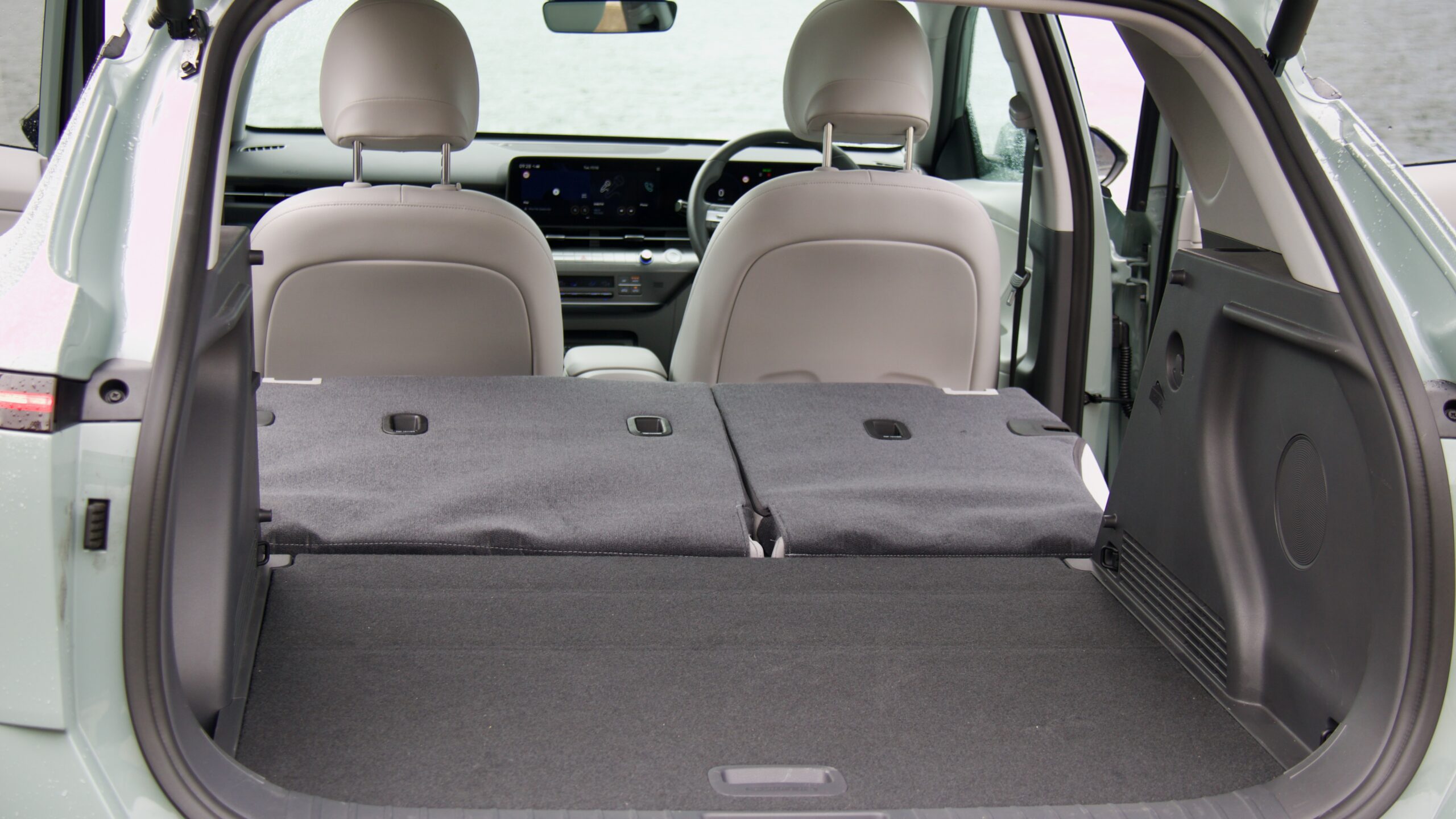
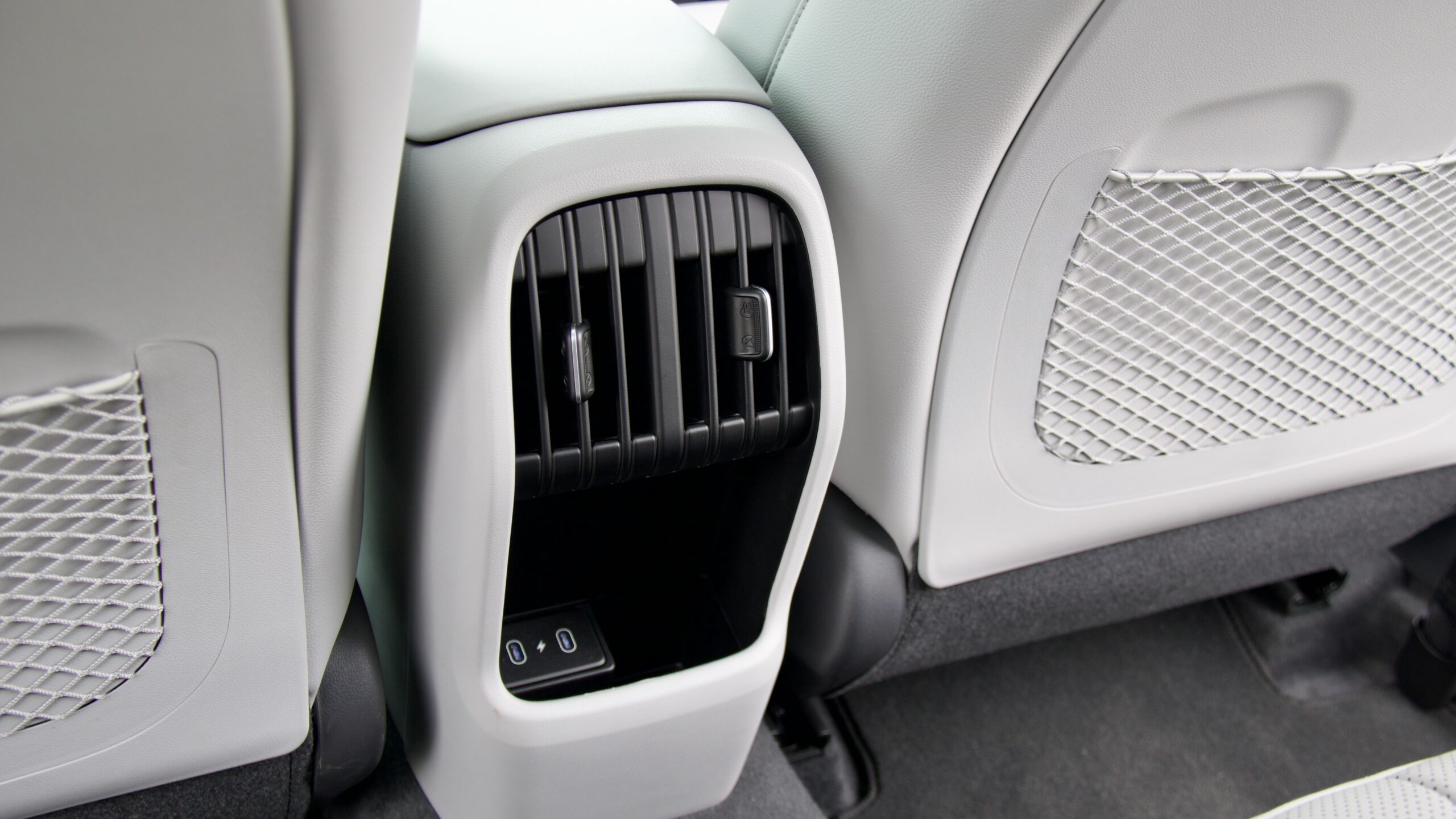
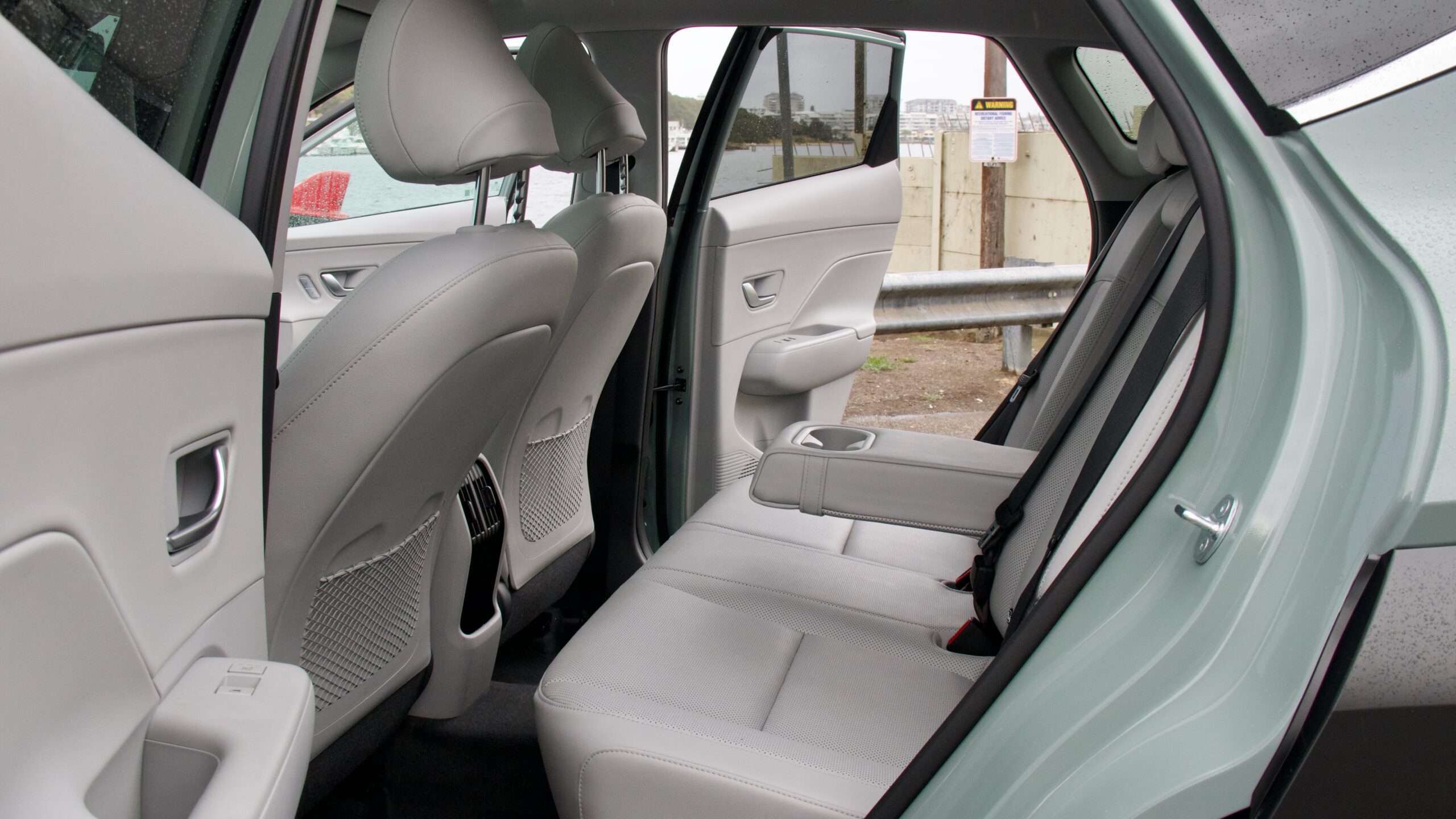
As with the back seat, the boot of the Kona has seen a nice boost in space to 407-litres with the seats up, and 1,241L with them folded – identical with the seats up to the Seltos, but 23L smaller than the CX-30. There are handy features like hooks, a boot net, an adjustable floor height and under floor storage. Plus, a space-saver spare wheel lies underneath the boot floor.
What warranty covers the 2023 Hyundai Kona Premium?
As with other new Hyundai products, the 2023 Hyundai Kona 2.0 MPi is covered by a five-year/unlimited-kilometre warranty with lifetime roadside assistance if serviced through a Hyundai dealer. The first five services or up to 75,000km cost $1,995 ($399 per visit) and the Kona has 15,000km service intervals.
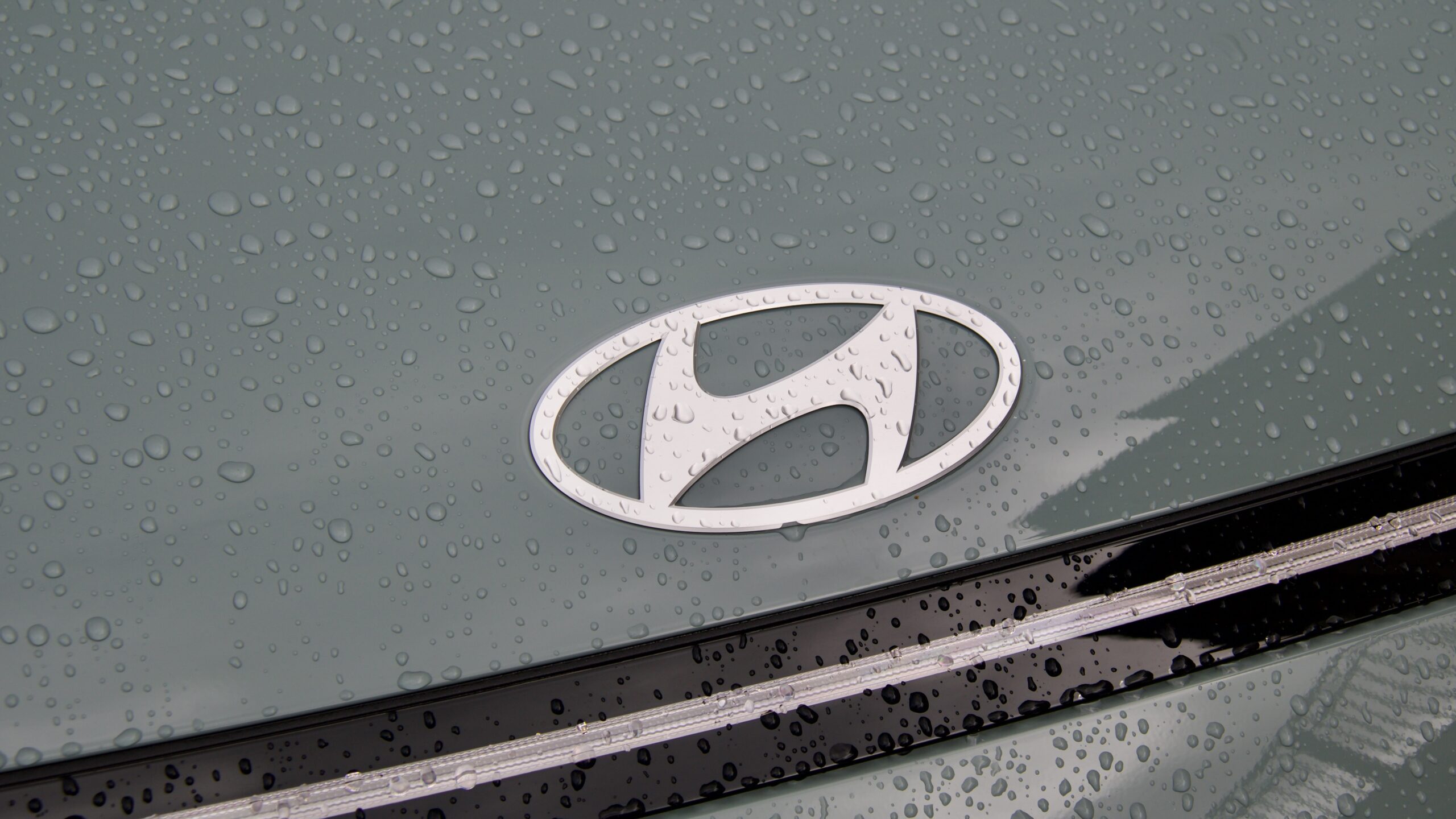
Hyundai’s sister brand Kia offers two more years of warranty, though its roadside assistance can only be extended to eight years in total. Mazda also offers a five-year warranty, though with five years of roadside assistance (regardless of where the car is serviced). At the time of writing, the Seltos uses the same 15,000km intervals as the Kona, though the CX-30 uses inferior 10,000km intervals but other Mazda models have moved to 15,000km intervals so we’re expecting the CX-30 to do the same soon. Five years/75,000km of servicing the Seltos costs $2,082 ($416 per service) and five years/50,000km of servicing the CX-30 costs $1,766 ($353 per service), but that’s to 5,000km less annually.
Should I buy a 2023 Hyundai Kona Premium?
Overall, like the regular model, the 2023 Hyundai Kona Premium represents compelling buying in the small SUV segment thanks to its combination of a very practical cabin, good value for money, solid driving experience, reasonable fuel economy, solid aftersales experience and funky styling. The Premium adds a long list of equipment like leather upholstery, ‘relaxation’ front seats, blind-spot cameras and configurable LED interior ambient lighting for a more special feel inside.
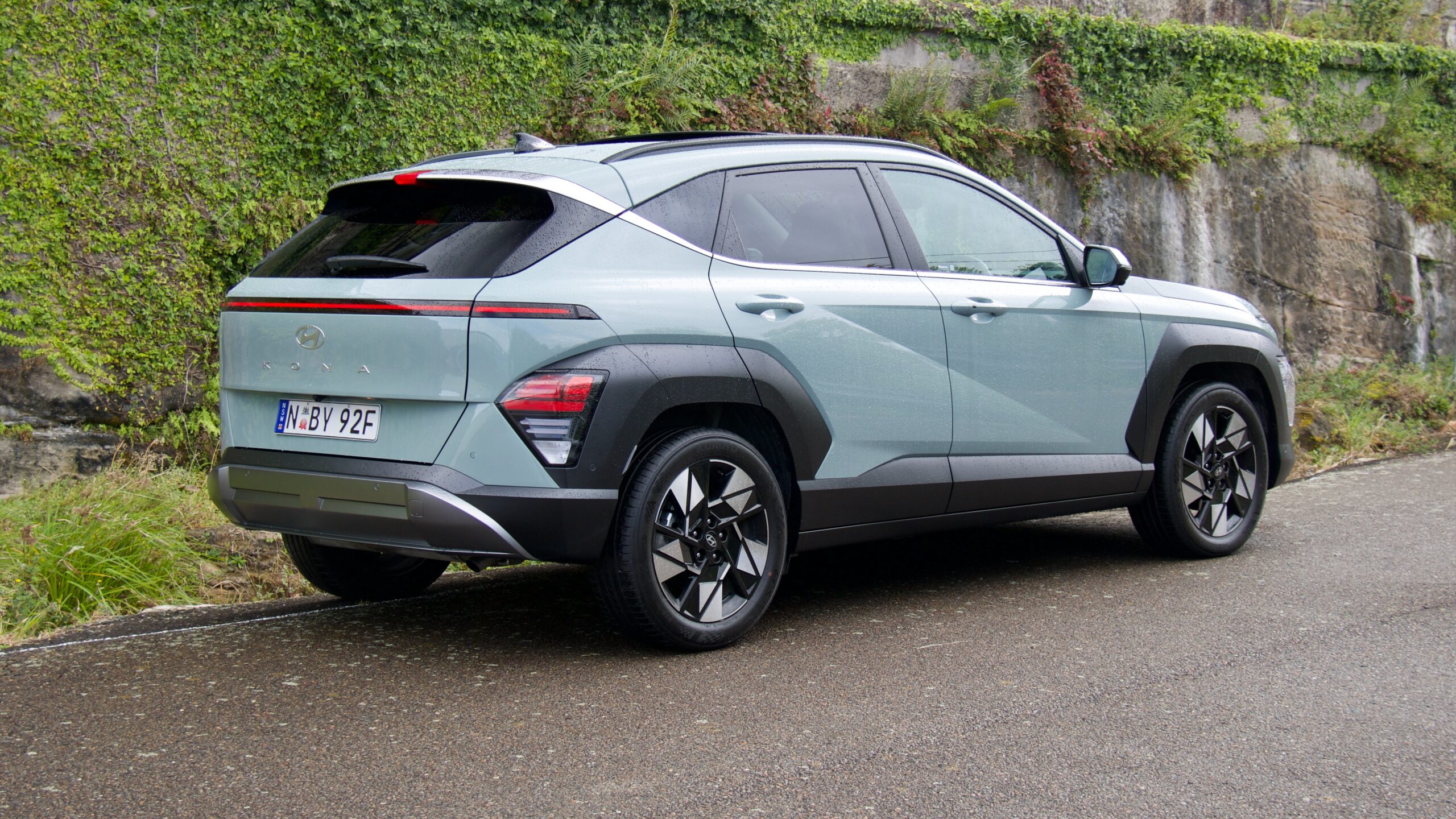
Counting against the Kona Premium is its firm urban ride, its infuriating speed limit and driver monitoring warning system, that its interior could feature better quality materials and that its engine isn’t particularly remarkable. But those negatives don’t detract from an overall well-rounded package that we think will continue to give Hyundai Australia solid sales figures. If you’re after a small SUV of some sort, we think the Kona should definitely be at the top of your test drive list.
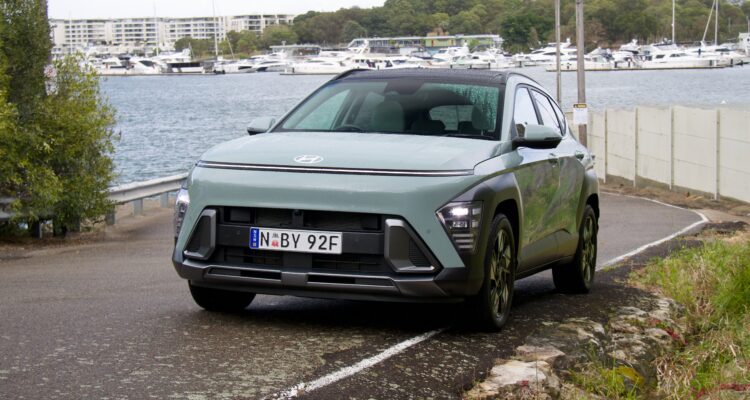
Leave a Reply